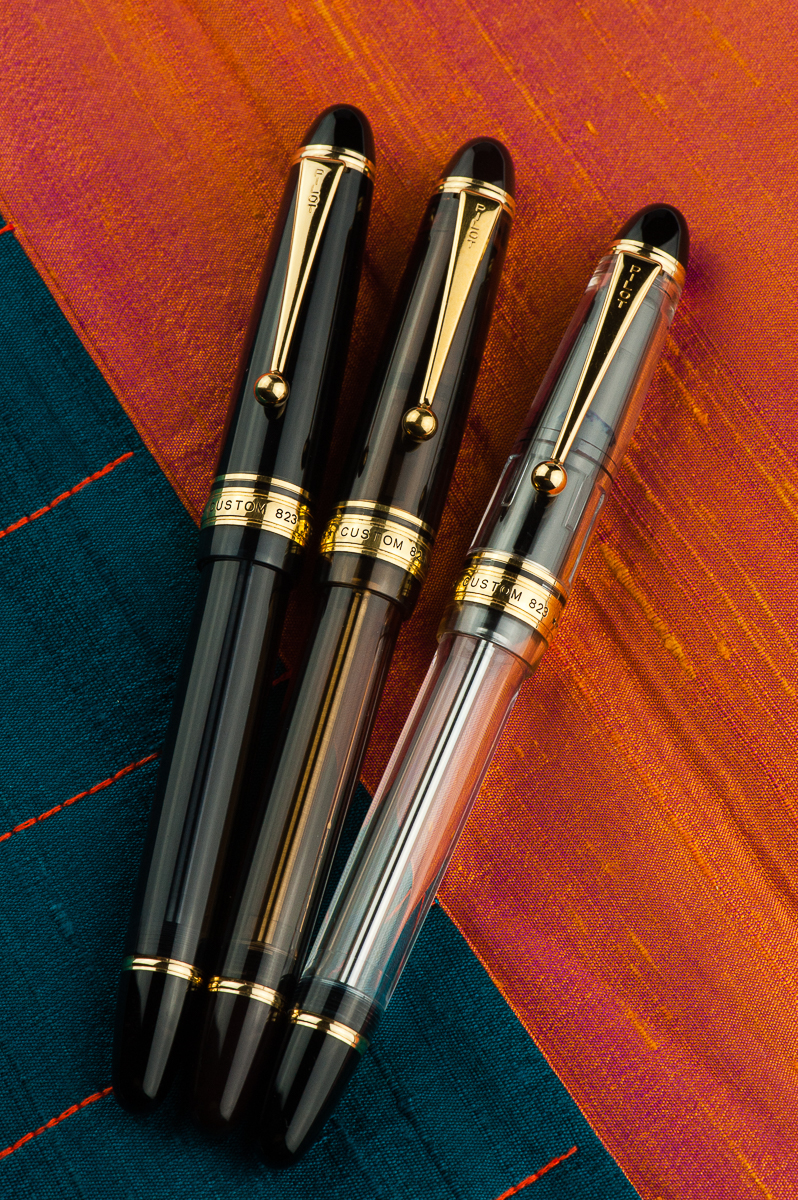
Hand Over That Pen, please!
Katherine: This is a serious looking pen. But not too serious. All three finishes (amber, smoke and clear) are demonstrators, but the amber and smoke aren’t obviously so. As usual, the cigar shape isn’t my favorite, but I like the way the translucent amber and smoke materials look with ink sloshing around. My long time gripe with the clear one was that the cap liner (on all three, but most obvious on the black) is black… and very obvious. BUT, I’ve recently discovered that it’s not hard to remove the cap liner — a fat eraser (like one of the ones on those easy grip chubby kids pencils) can easily pull it out. Then it looks oh-so-much cleaner! If this pen came in the 912’s styling (flat ends, rhodium trim), it would be a must-own for me, instead I very much enjoy it, but I’m not in love with the way it looks.
Pam: Le sigh. It’s another cigar shape pen. Its saving grace is due to the demonstrator quality of them. The clip is… not aesthetically pleasing to me. I really enjoy the black and transparent material. Per usual, I am more fond of rhodium trim, however I don’t think that trim is available in the 823 model. Oh, what I would give for a ruthenium trim on the clear/transparent model. I will admit that the vanity in me prevent me picking up this pen. (Spoiler alert: I regret not picking up this pen sooner.)
Franz: Now I feel out of place. I love cigar shaped pens but the Pilot Custom 823 is more torpedo shaped, no? Hihihi… Either way, I love the 823’s shape and for some reason, that smoke finish is a winner for me! The 823’s size is substantial in the hand but at the same time it’s not too big, if that makes sense.
Just like what we learned in our review of the Pilot Custom 912, Pilot assigned a lot of their pen model names according to the company’s year when they were introduced. Namiki/Pilot was founded in 1918 and they are celebrating their 100th anniversary this year as well. So for the Pilot Custom 823, the first two digits (82) mean that the pen was released in Pilot’s 82nd year, 2000. The third digit represents the manufacturer suggested retail price in 10,000 Japanese Yen, ¥30,000.
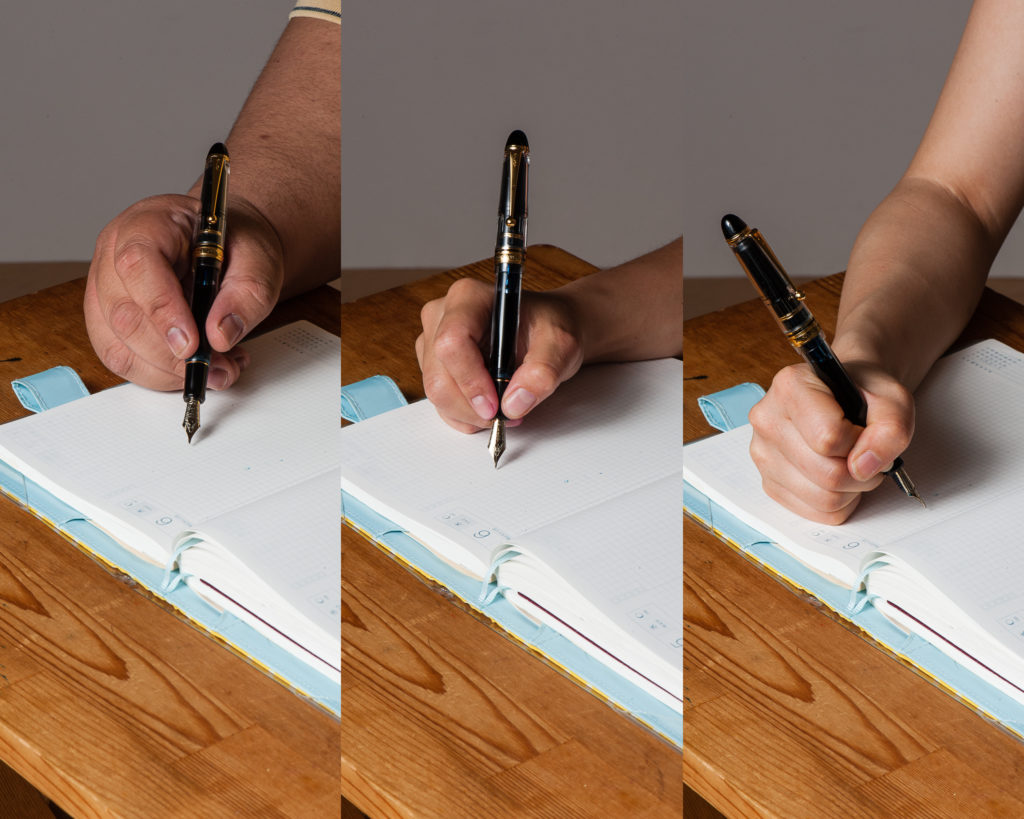
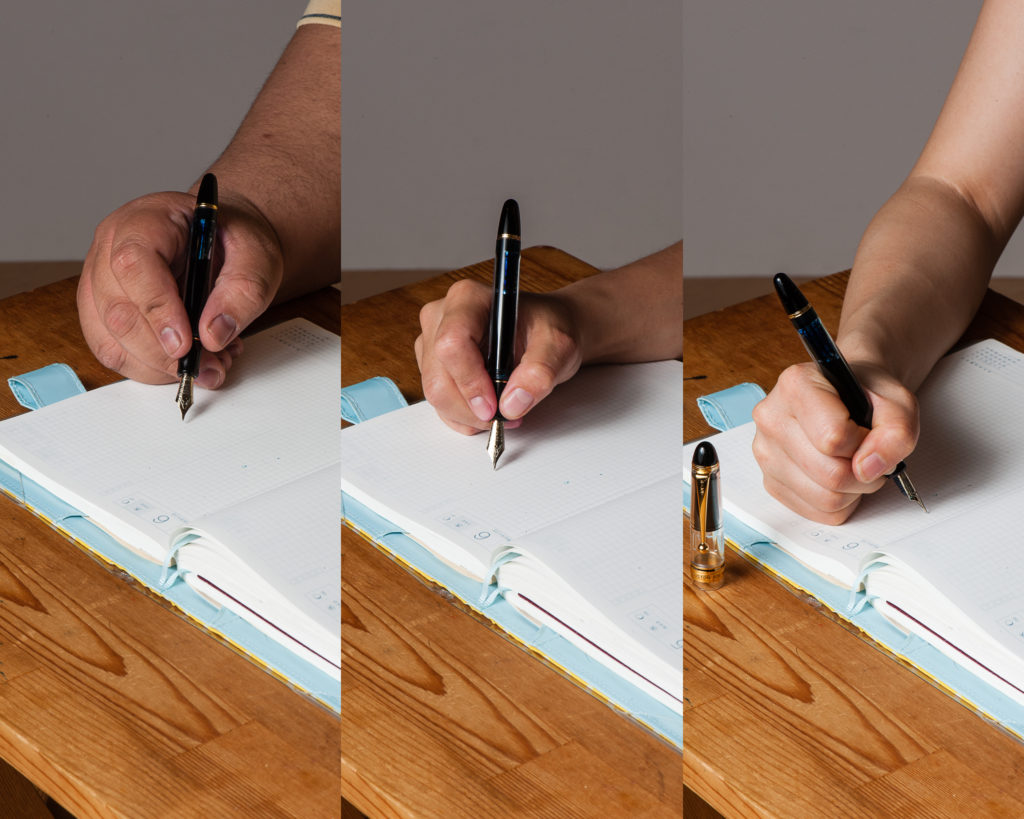
The Business End
Katherine: Yay for Pilot #15 nibs! I really enjoy them. The medium on this pen was no different — a wonderful balance of smooth and wet, but not overly so in either direction. I’ve also had the pleasure of using a handful of other nib sizes on 823s and have been quite happy with all of them. Personally, I own a #15 FA, and love the bounce (the #10 I own is softer/flexier) and smooth writing it gives me.
Pam: Franz was kind enough to allow me to borrow a 823 with a fine nib. What a nib!!! It’s honestly everything one could love about a Pilot nib. Granted, my experience with Pilot is limited to a few select pens (Elite, Myu, m90, Murex, Volex) and I typically use the Pilot Prera and Vanishing Point at work. What was quite different about this particular nib is the size; it’s so big!! It’s also a great “upgrade” in both size, material and performance.
Franz: The 823’s nibs are very pleasant to write with. No adjustments were necessary to provide a great writing experience. However, among the three, the broad nib was modified by Mr. Dan Smith into a juicy stub. The medium and fine nibs had a good flow as well. The 823 nibs definitely have the bounce to give that flair in your writing.
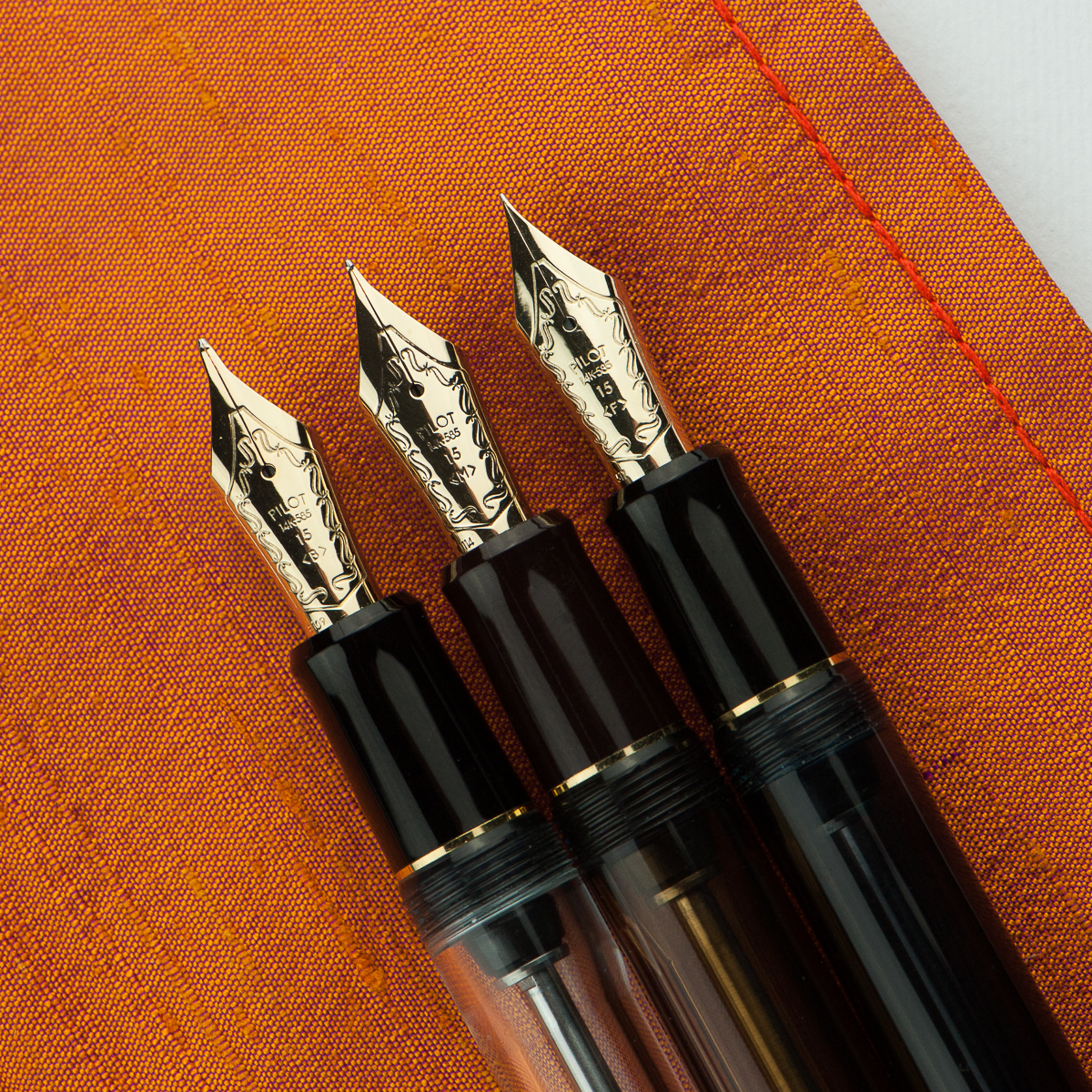
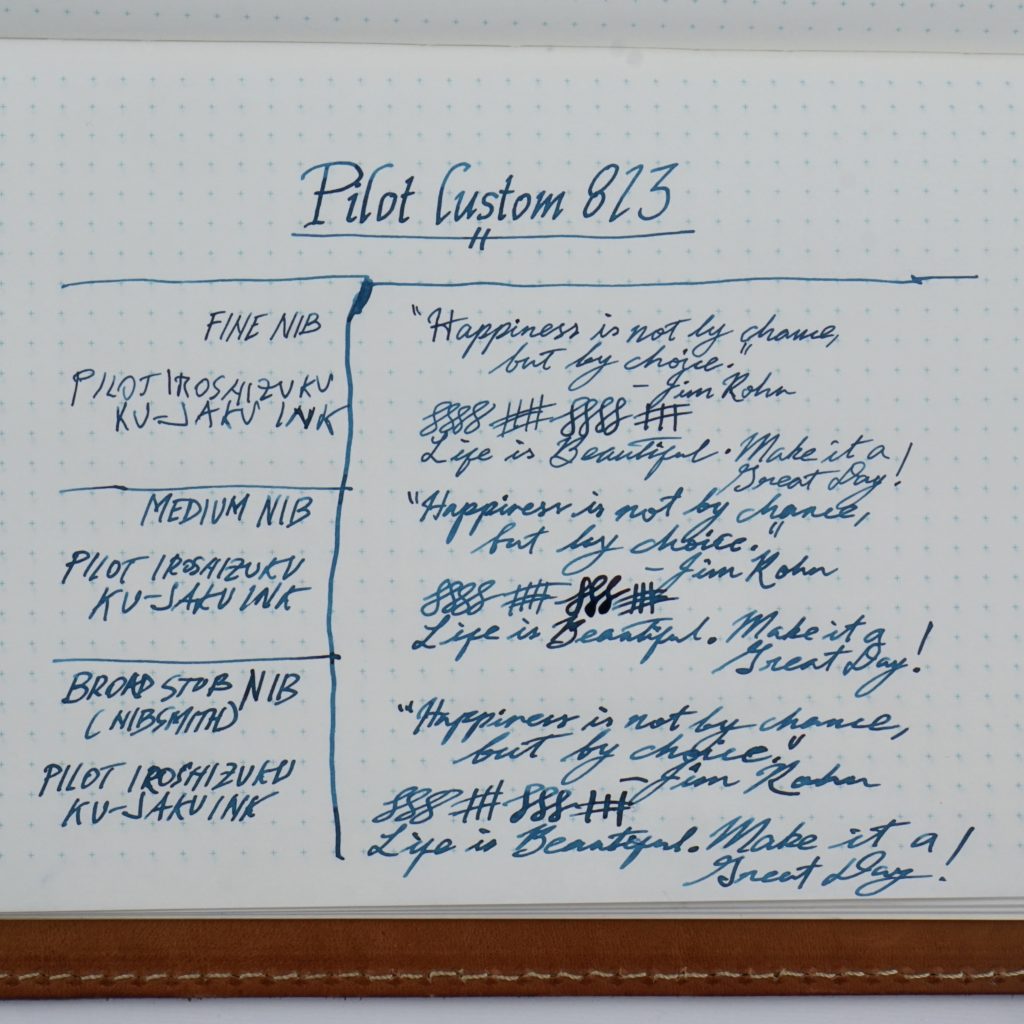
Write It Up
Katherine: I thought the 823 was overhyped until I borrowed one from Franz for this review. As I wrote with it (and stared at it, trying to settle my feelings on its aesthetic) I realized why it’s such a popular pen… It’s a solid workhorse of a pen that writes wonderfully and feels solid and comfortable in the hand. It’s not too big, not too small, not too smooth, not too feedbacky… Somehow it’s a fantastic balance on so many axes (plural of axis, not that I’m balancing pens on wood chopping implements). I guess it’s implied, but I had a great time writing with it — though I did forget to loosen the knob the first time and was momentarily vexed as I wrote the feed dry.
Pam: I didn’t just write with this pen for an extended period of time. I “borrowed” this pen from Franz for an extended period of time. It’s has just enough stiffness and give from the material and size to make the writing experience tactically enjoyable for me. I found the pen to be very well balanced unposted. It’s a bit tall for me posted. The ink in the chamber is a bit mesmerizing.
The nib was Pilot smooth with little/no feedback. The nib performed surprisingly better than I expected on cheap office paper. It didn’t feather as much as usual. Ink used was Pilot Iroshizuku Ku-Jaku. The pen and ink combo shined in both my Midori insert and Hobonichi (Tomoe River paper).
The writing experience of this nib is quite unique to this nib/pen. I am a bit addicted to the particular writing experience that this pen provides. I would highly recommend trying this pen out yourself. Just remember, the first taste is free. ;P
Franz: The biggest thing that I love about the Pilot 823 is that there isn’t a step between the barrel and section and that the threads aren’t sharp. When the cap is posted it is plenty long for my large hand but like Pam, I prefer to write with the pen unposted because the weight is more balanced. So with fingers on the threads, the unposted length is very comfy for me.
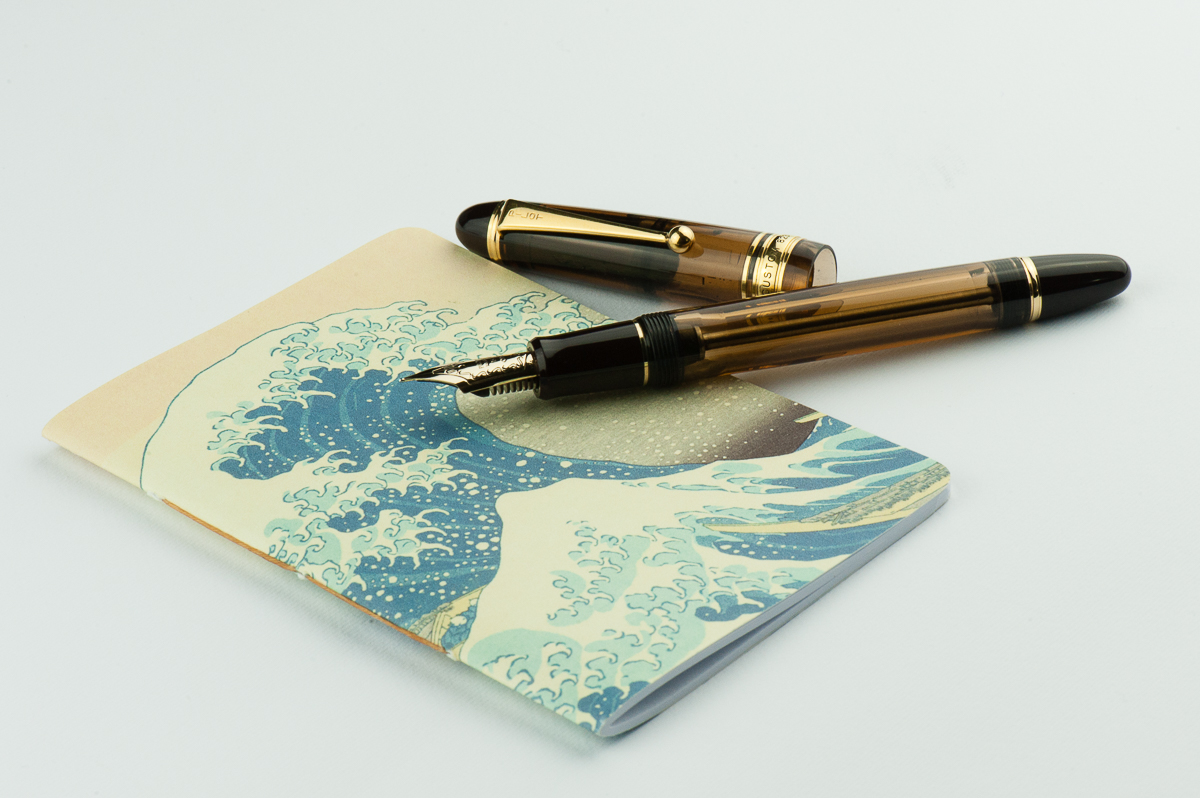
EDC-ness
Katherine: Solid clip, 1.75 turns to uncap and an ink capacity that lasts pages and pages and pages. And it low-key looks so your boss doesn’t wonder why you’re writing with a glitter stick. But some oooh and aah when your teammates notice the ink sloshing around inside.
Pam: I loved this pen at work. It was less than two turns to get you writing and as previously stated, the F nib does a pretty good job on office paper. The clip was just enough to easily slip in and out of a my white coat pocket with little issues. The ink capacity of this pen is fantastic and by far exceeds my other EDCs for work. For quick note taking, the VP is the height of convenience. However, for end of the day wrapping up “thought gathering” and where you have an extended note-taking session, I kept reaching for the 823. I may be adding another Pilot to my pocket for work at the rate we are going.
Franz: The 823 is a great companion for use at work and when I’m out and about. The fine and/or medium nib was great for the copier paper in the office and it just wrote well. The ball clip is sturdy and fits onto my shirt pocket as well as my jeans pocket. The biggest advantage of the 823 is its ink capacity. When you operate the vacuum filler (pictured below), the pen gets about 75% filled up. There is a maneuver you can do to fill the pen 100% of ink which is about 2.5ml. Dan Smith shows this in his video review of the Pilot Custom 823 here.
As Katherine described earlier, the 823 does have a shut-off valve (second picture below) and you need to unscrew the knob to make sure the ink flows freely onto the reservoir and feed. Gotta make sure that it is unscrewed or else you’ll find the nib writing dry after a page or two of journaling (trust me, I know). The shut-off valve helps contain the ink when you are flying, or if you are shipping the pen filled with ink. I received my 823 filled with ink in the mail from my friend and aside from ink spots in the cap, no other ink was wasted.
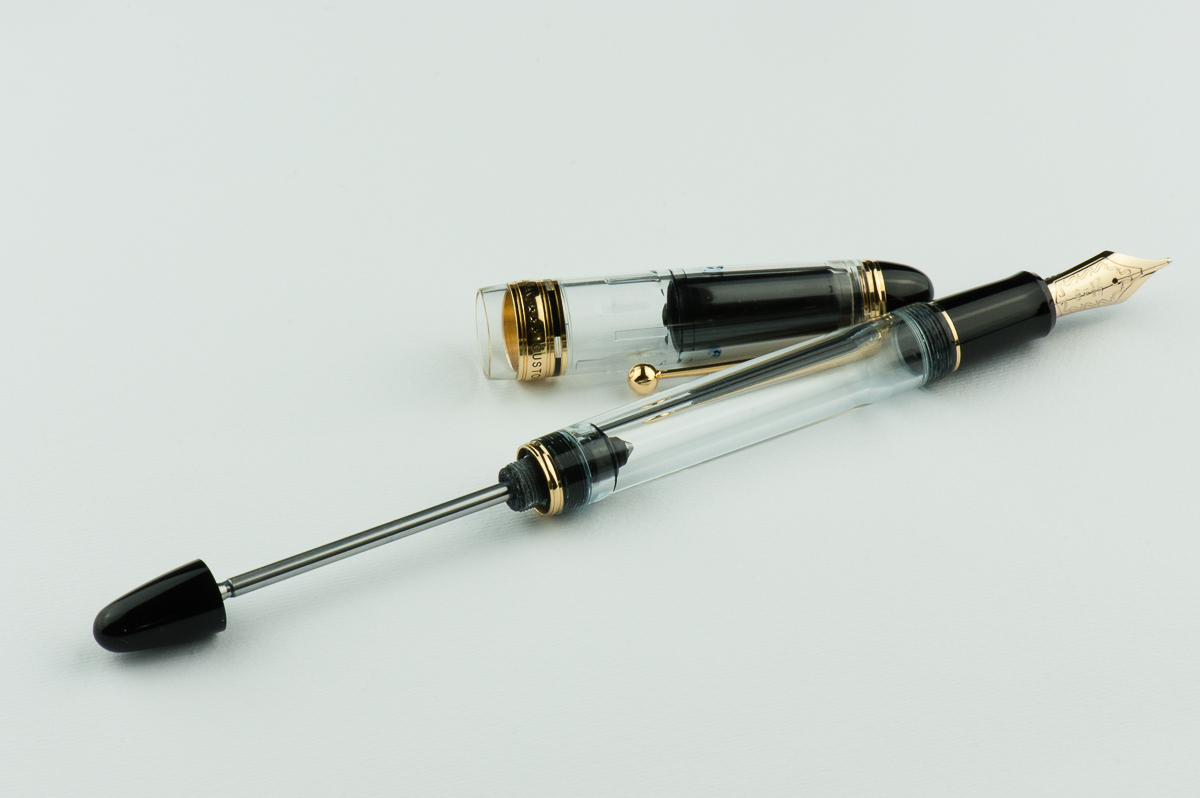
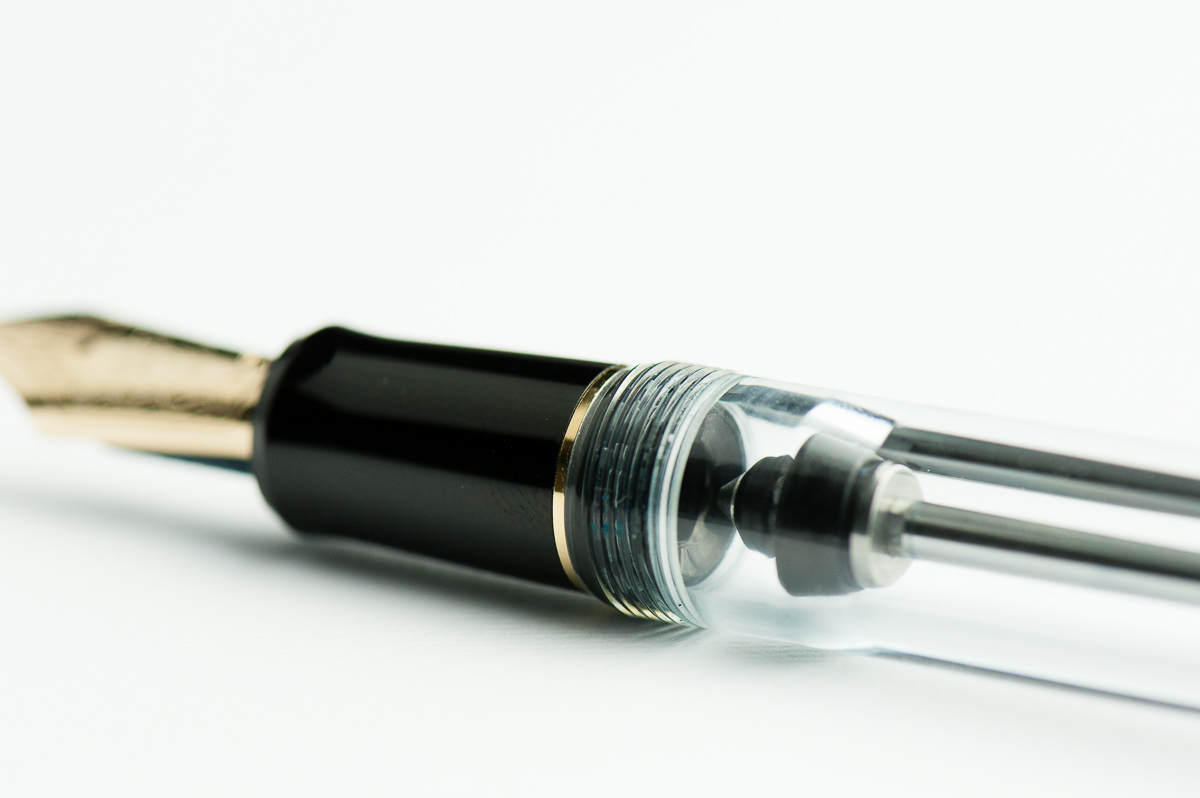
Final Grip-ping Impressions
Katherine: The 823 is a solid pen. It’s not my favorite aesthetically, but I’m more than willing to forgive it that for how well balanced of a pen and nib it is. However, at $250-300 new, it’s not a pen I’m in a hurry to acquire (well, also because I arguably have more than enough pens…) but I do one day want to own one with an FA nib. I’m sure this will upset someone, but the 823 reminds me a lot of another pen I love, the Pelikan M800 — solid workhorse pens with an ink capacity for days and a clean professional vibe (assuming you aren’t sporting a maki-e M800 or something). If you like cigar shaped pens and gold trim, I don’t think you can go wrong with the 823.
Pam: #PenAddictProTip I agree with Brad. As in you should try the 823 for yourself. I believe that this pen is in the “everyone should try it or own it” category, like the Lamy 2000. You may not like it, but it’s a pen that is so easily and quickly reference for what it brings to the table: a LARGE gold nib, piston filler, a classic shape with a modern twist and a fantastic writing experience. It is well deserving of the “pens you should know” pantheon. The price maybe a sticking point, but I have had such a great writing experience with this pen that if you enjoy it as much as I did, it may well justify the price for you.
Franz: Well, if you haven’t noticed yet, the Pilot Custom 823 is a definite win among the three of us. It is a decently sized pen with great balance and is a great fit for small to large handed writers. Currently in the United States, only the Amber finish is available. I really wish that the Smoke and the Clear finishes would be made available in the market. You may purchase the two finishes from Japan sources if you are patient and knowledgeable enough to do so. I was lucky enough to secure my Pilot Custom 823 in Smoke from the secondary market.
You can call it a cigar-shaped, or a torpedo-shaped pen, it doesn’t matter as long as you try one. It’s a fantastic pen for me and I’m happy I own one.
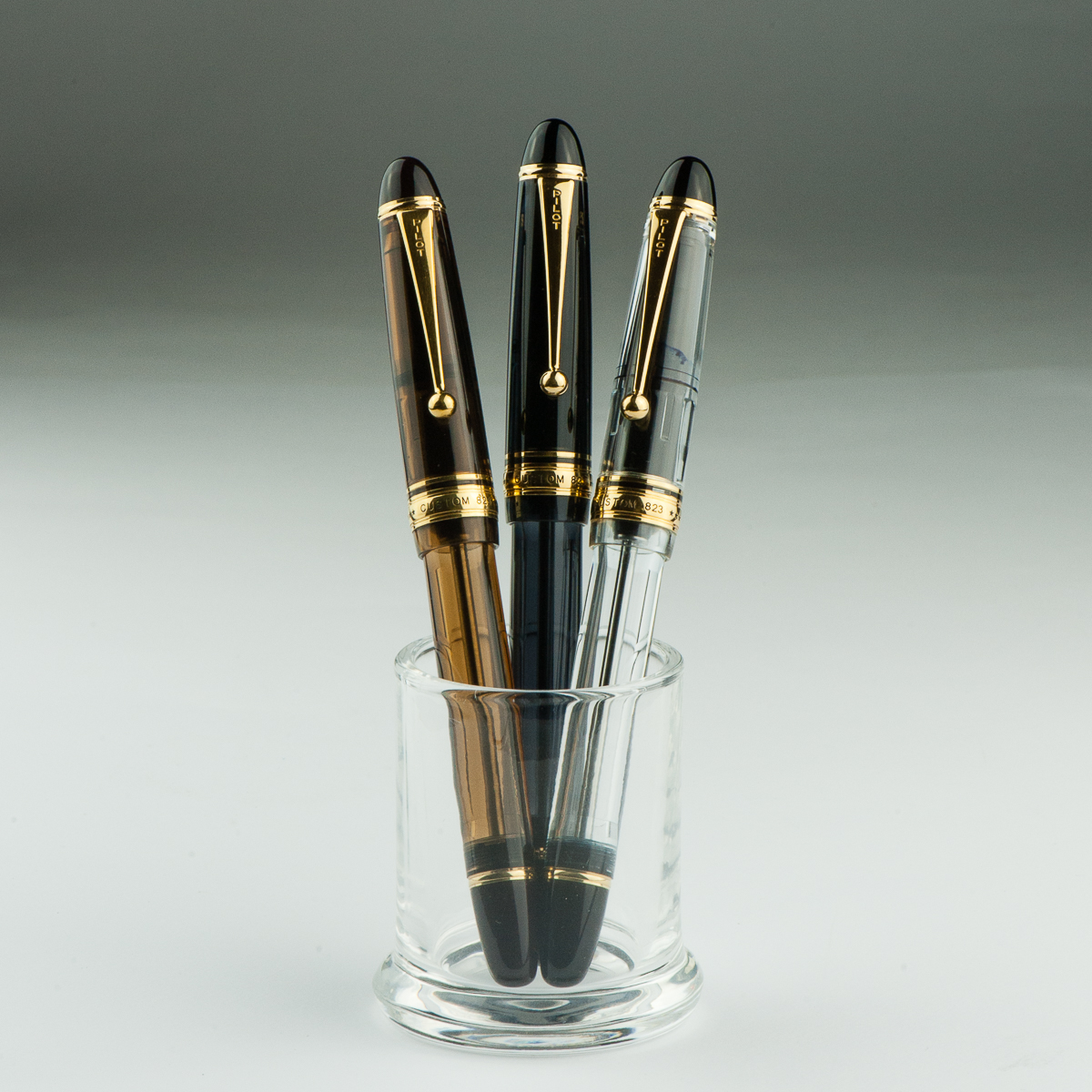
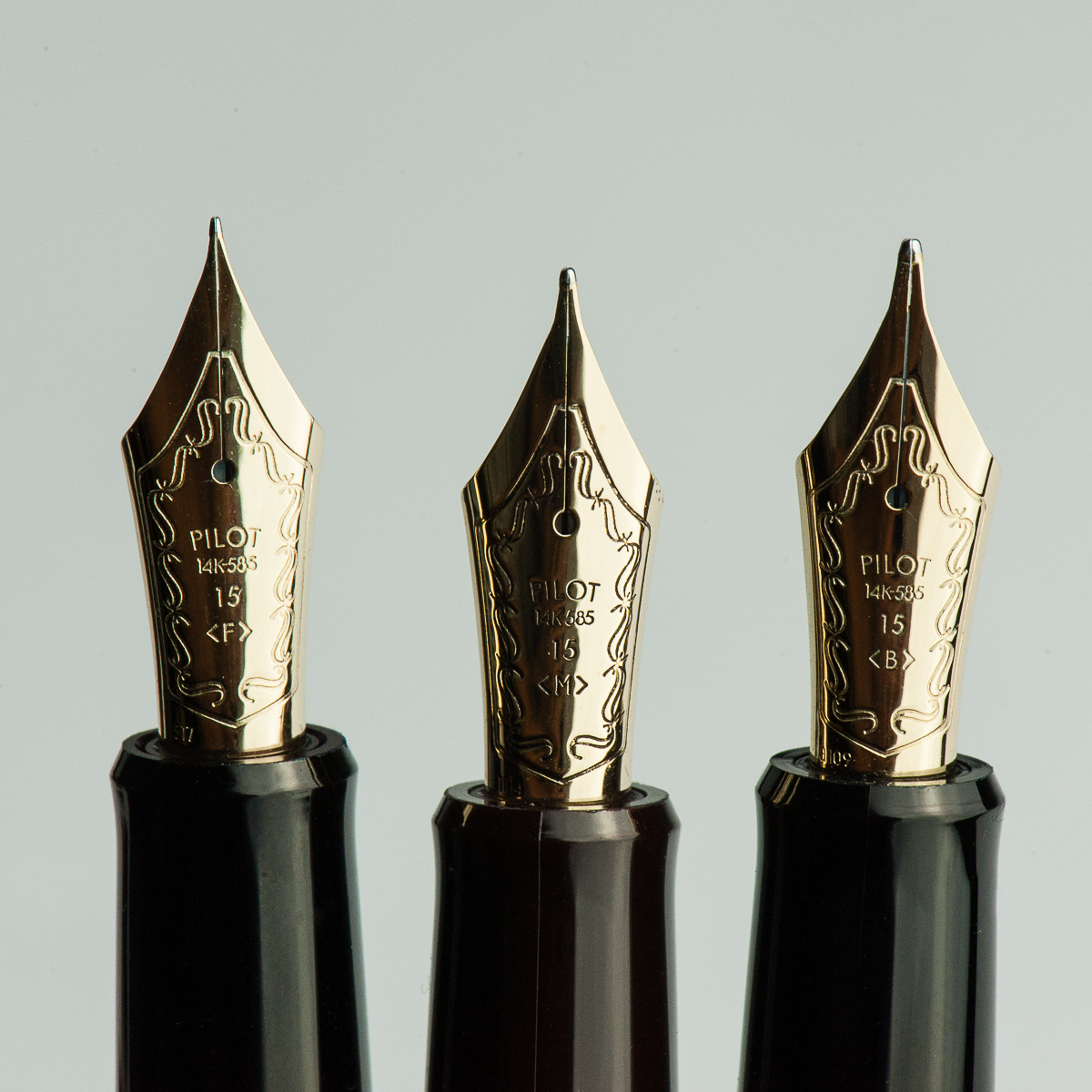
Pen Comparisons
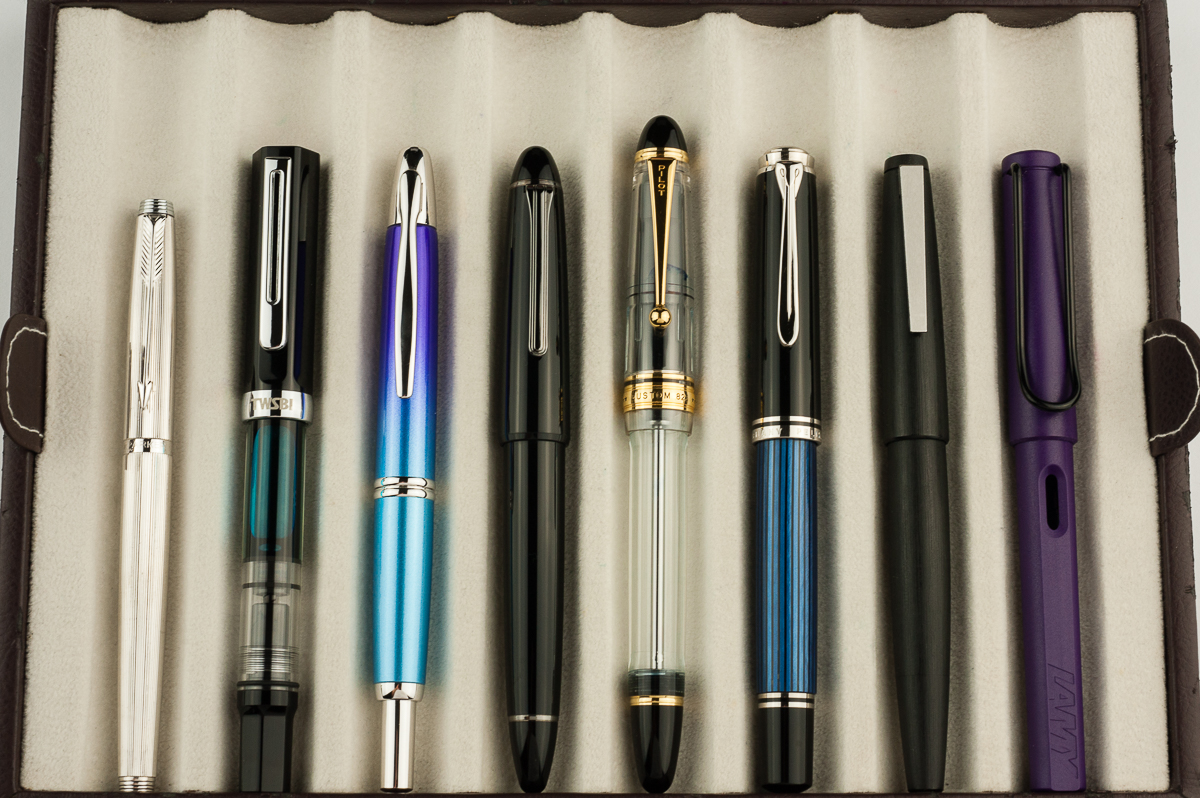
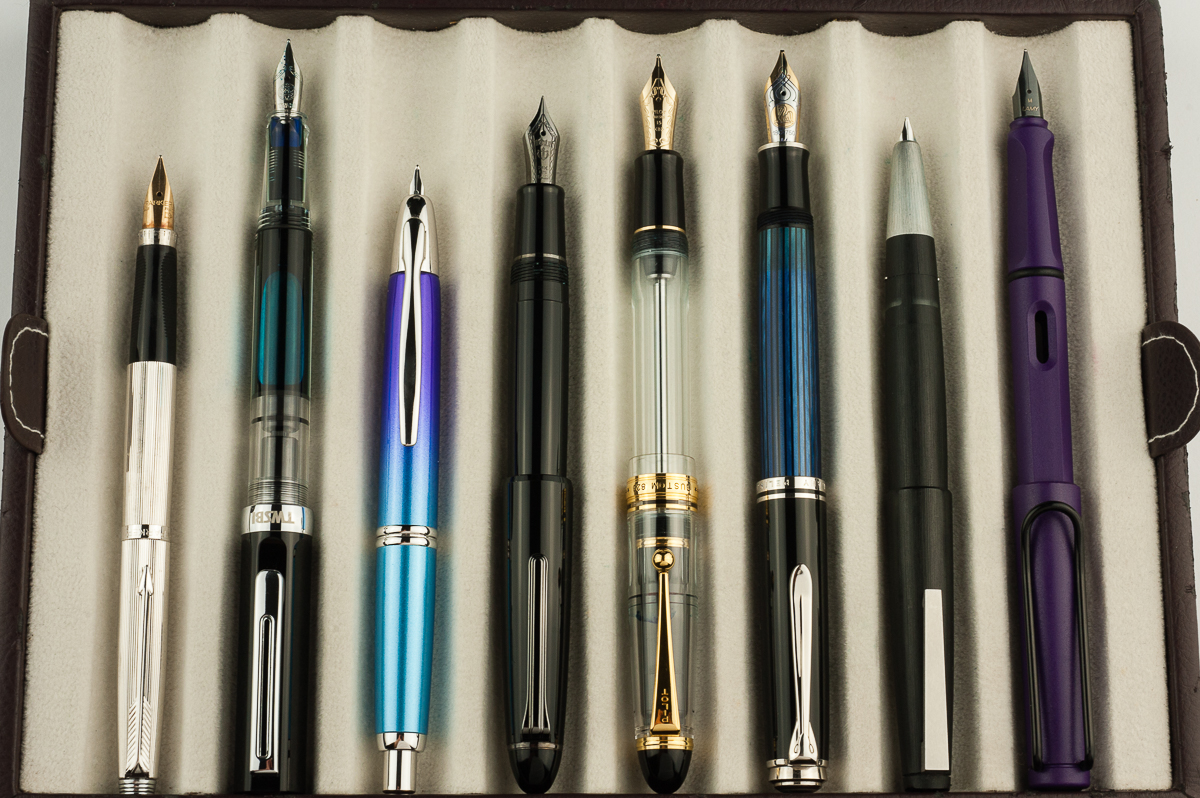
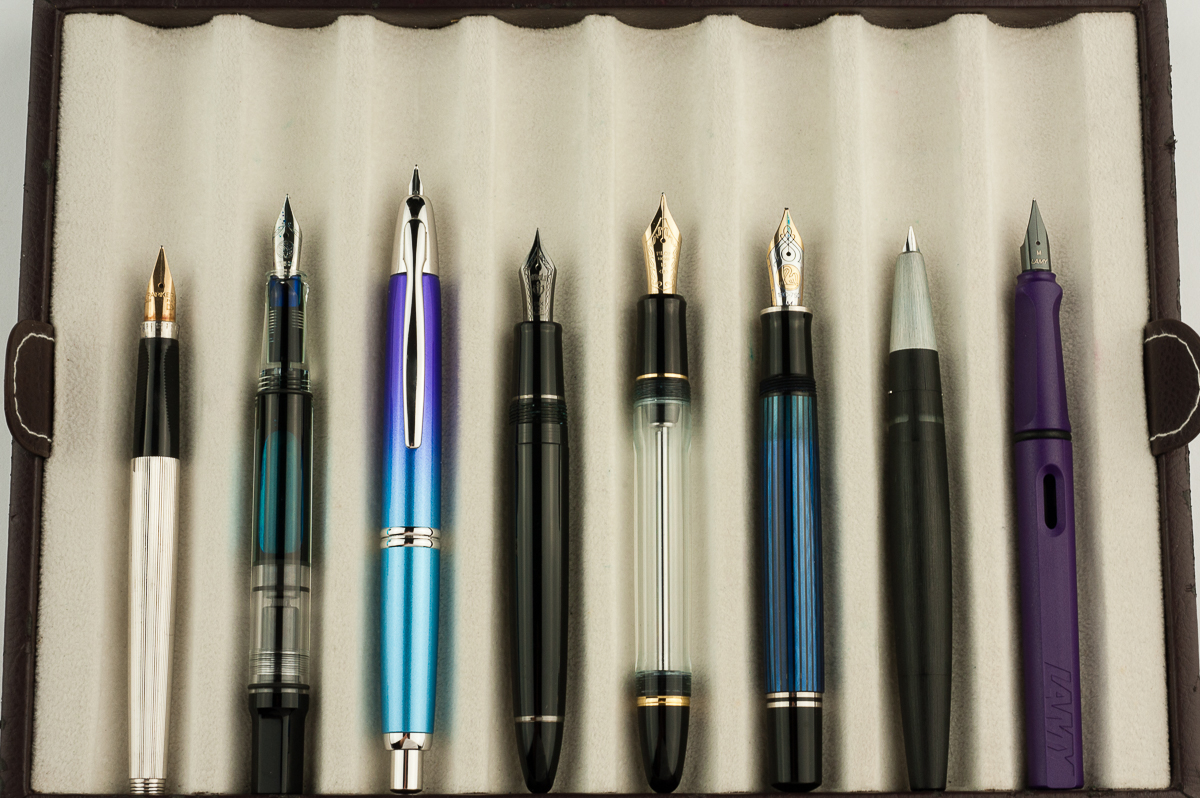
Pen Photos (click to enlarge)
Amber
Clear
Smoke
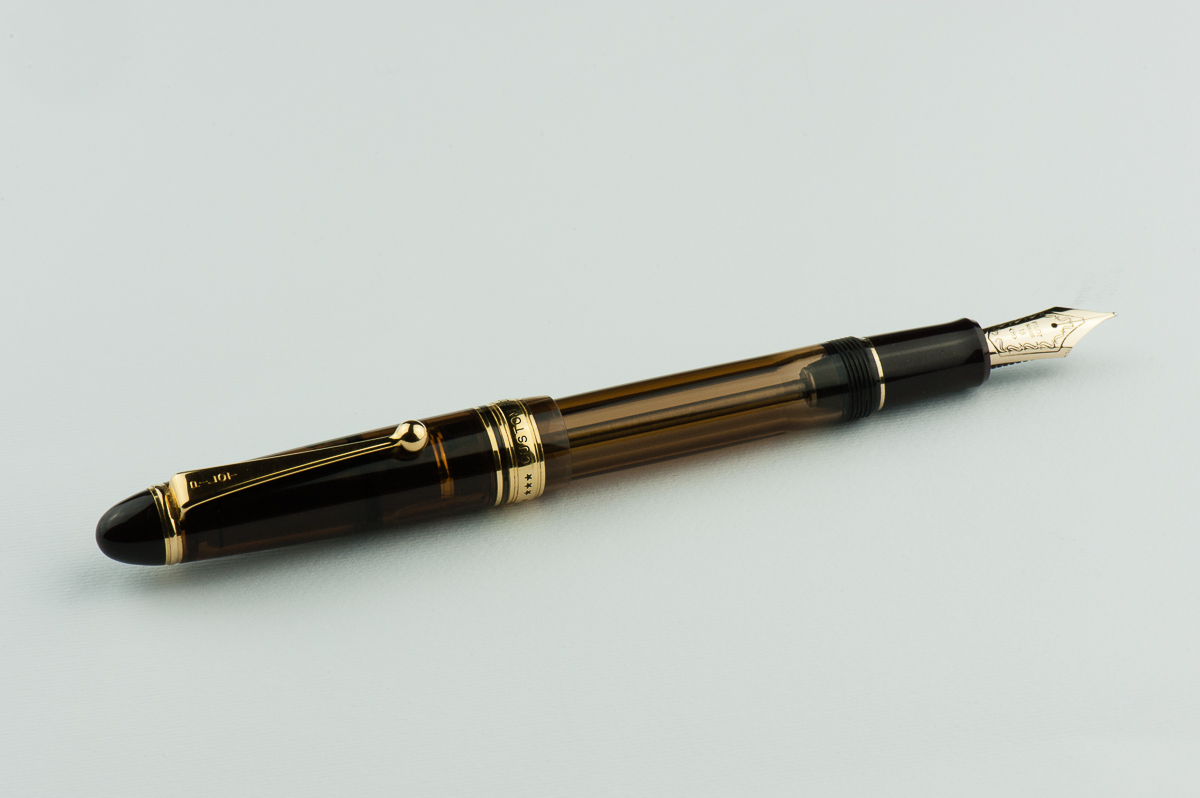
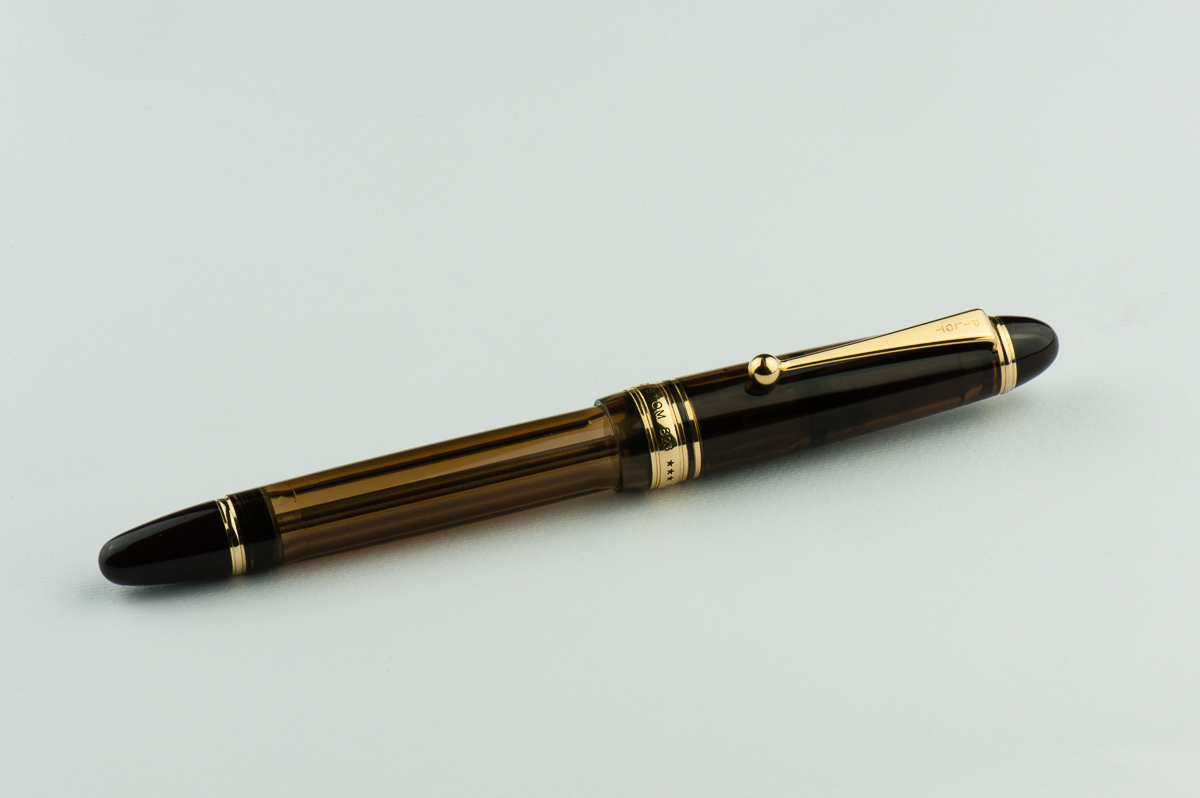
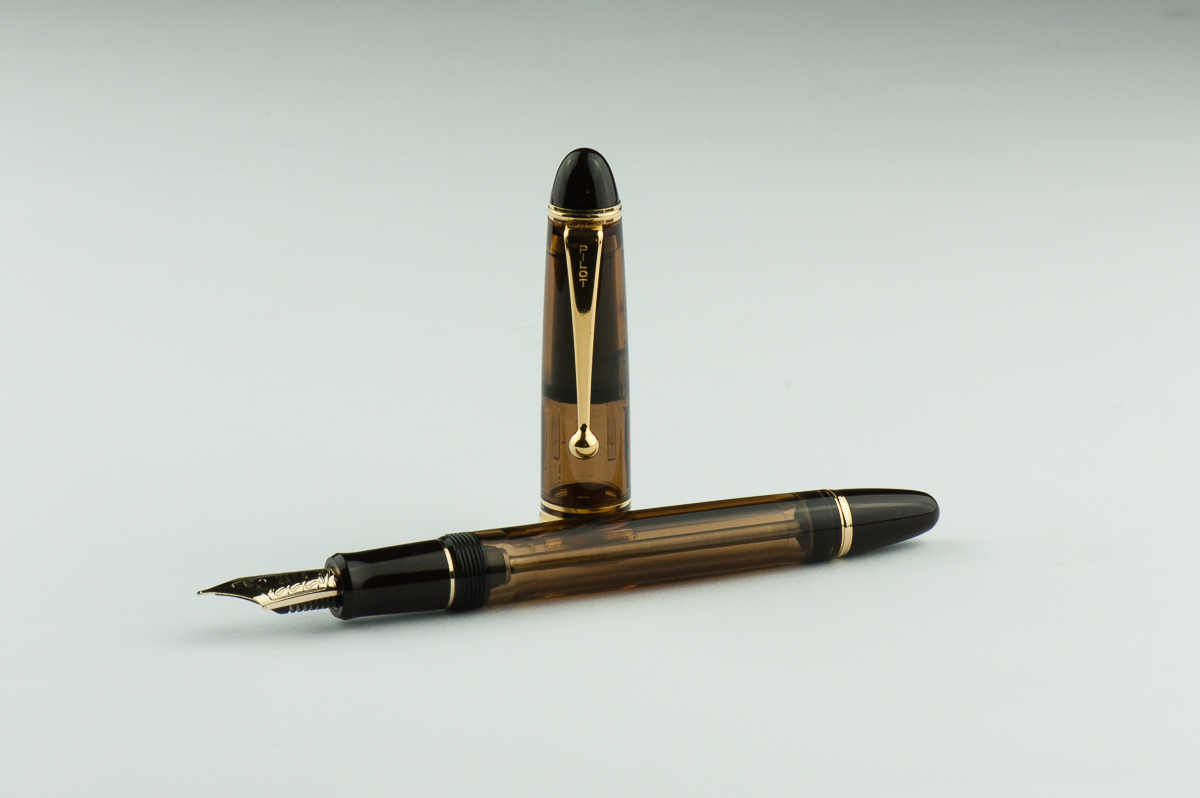
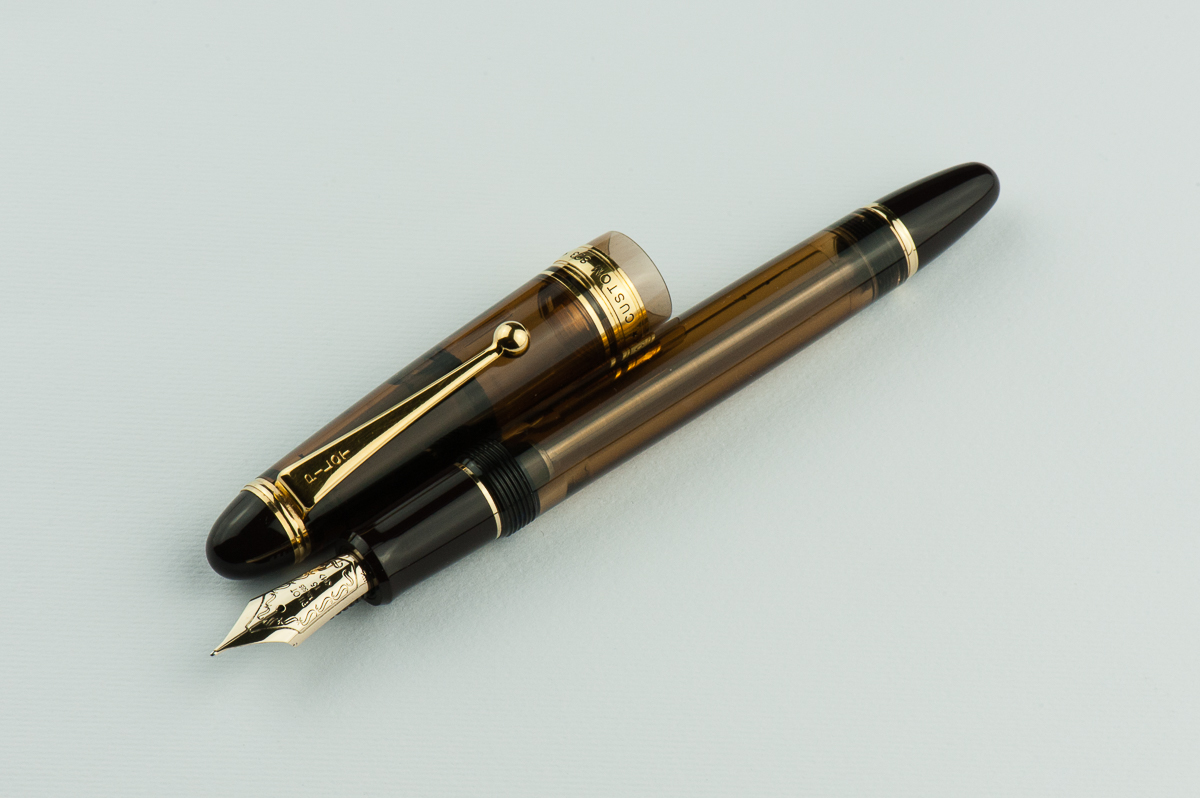
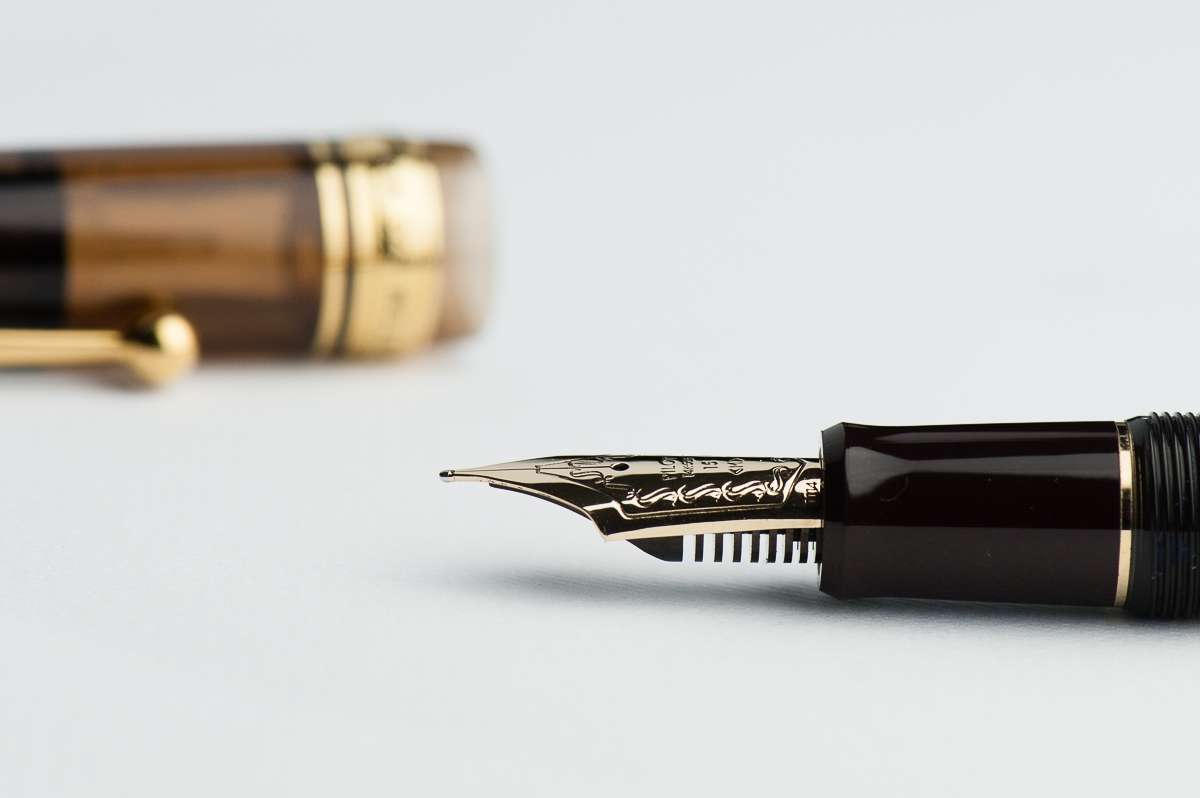
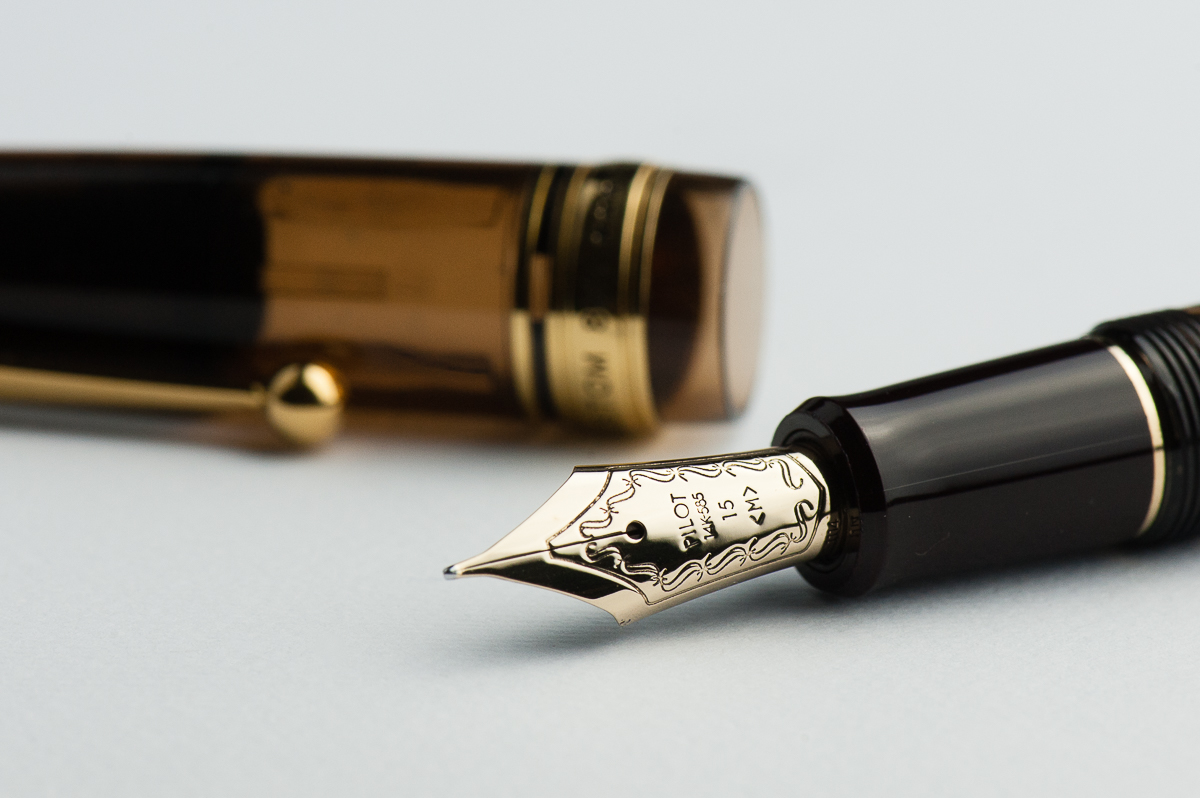
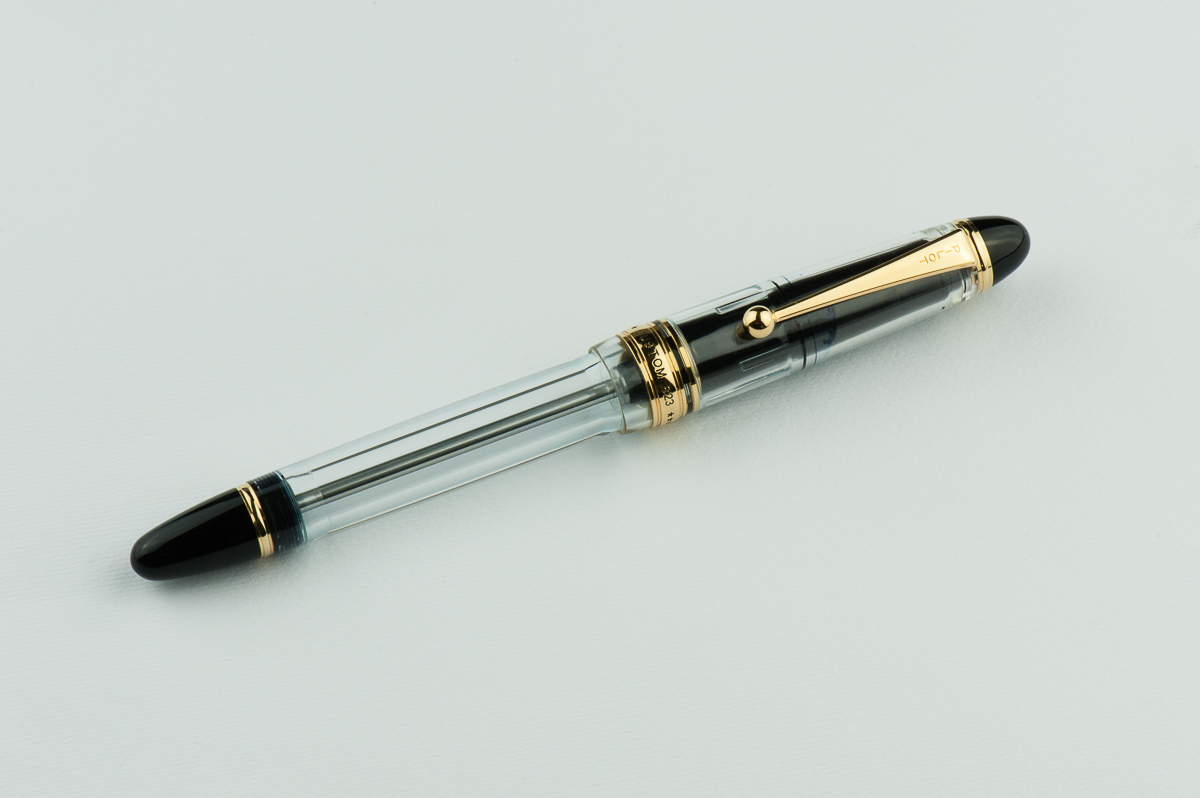
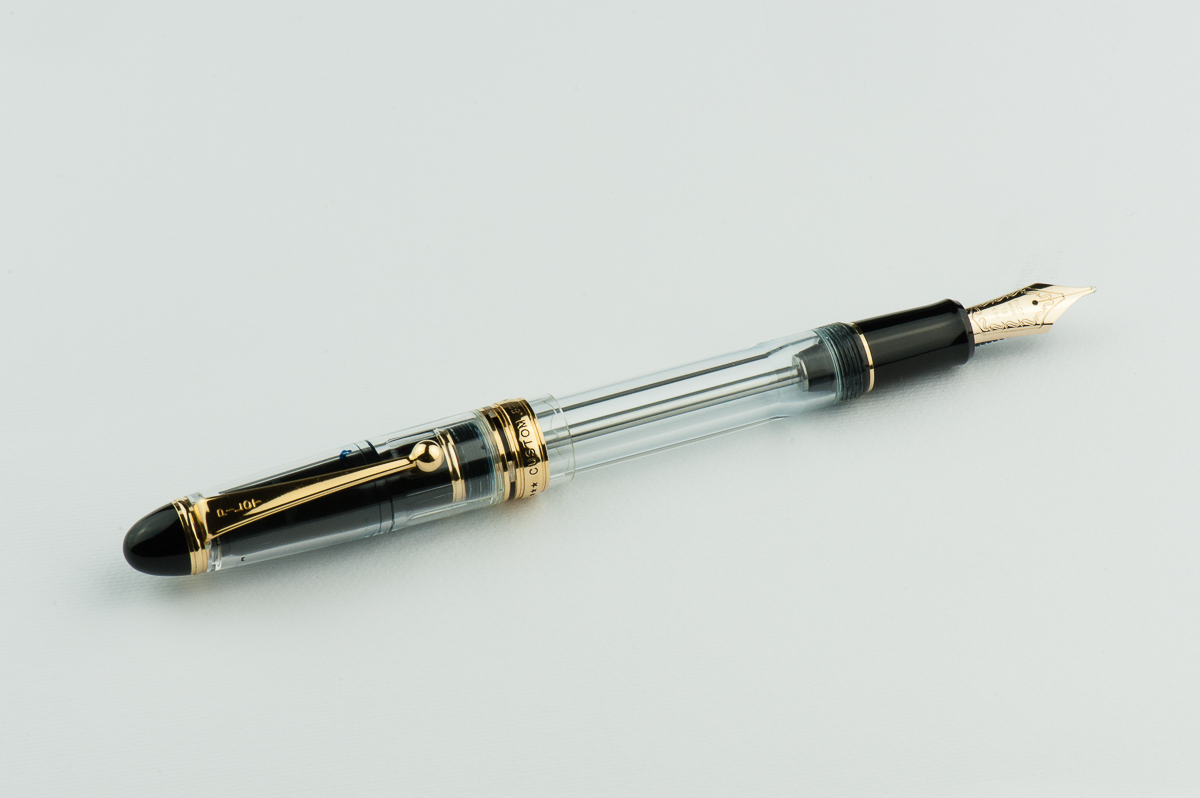
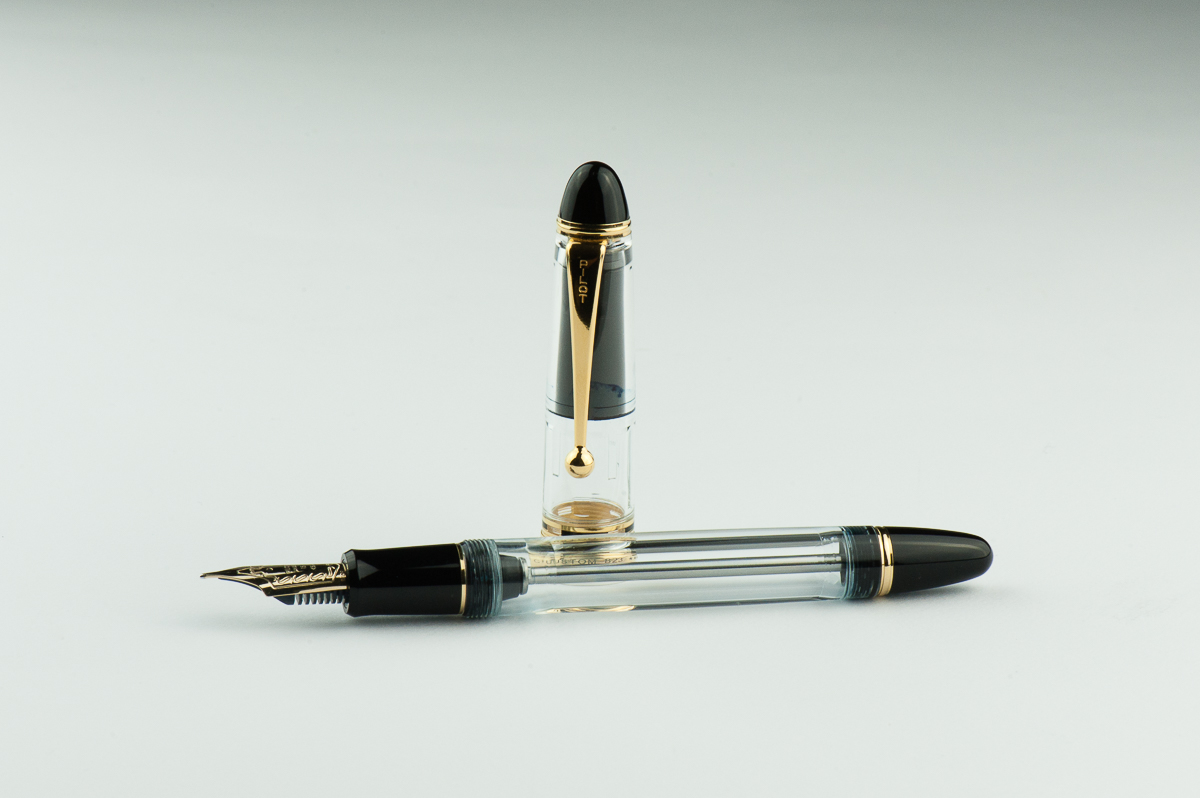
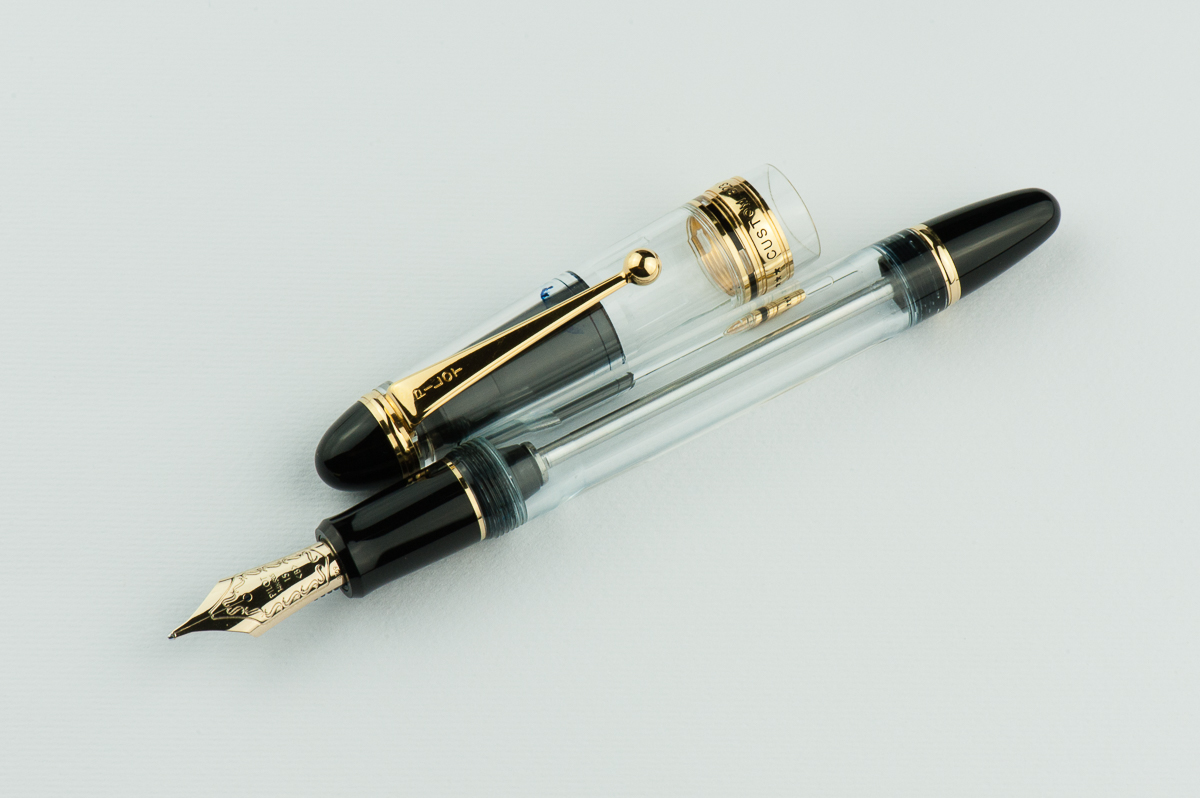
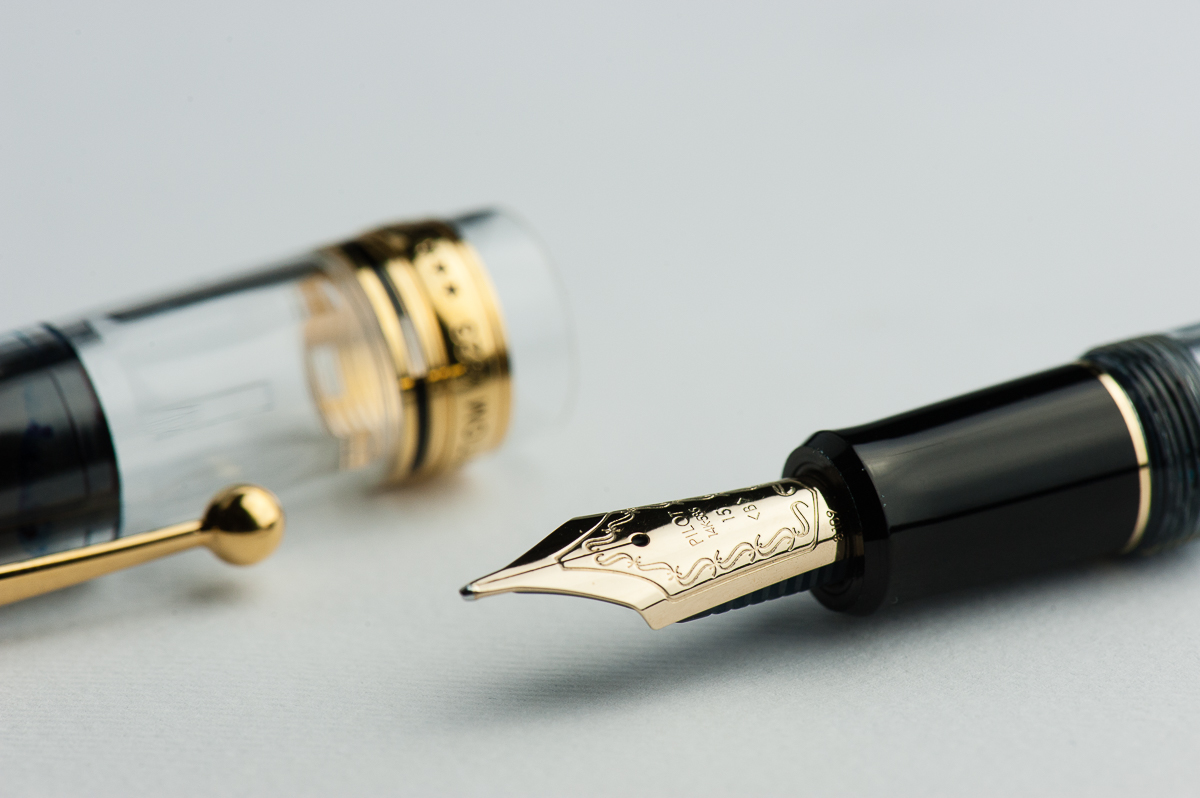
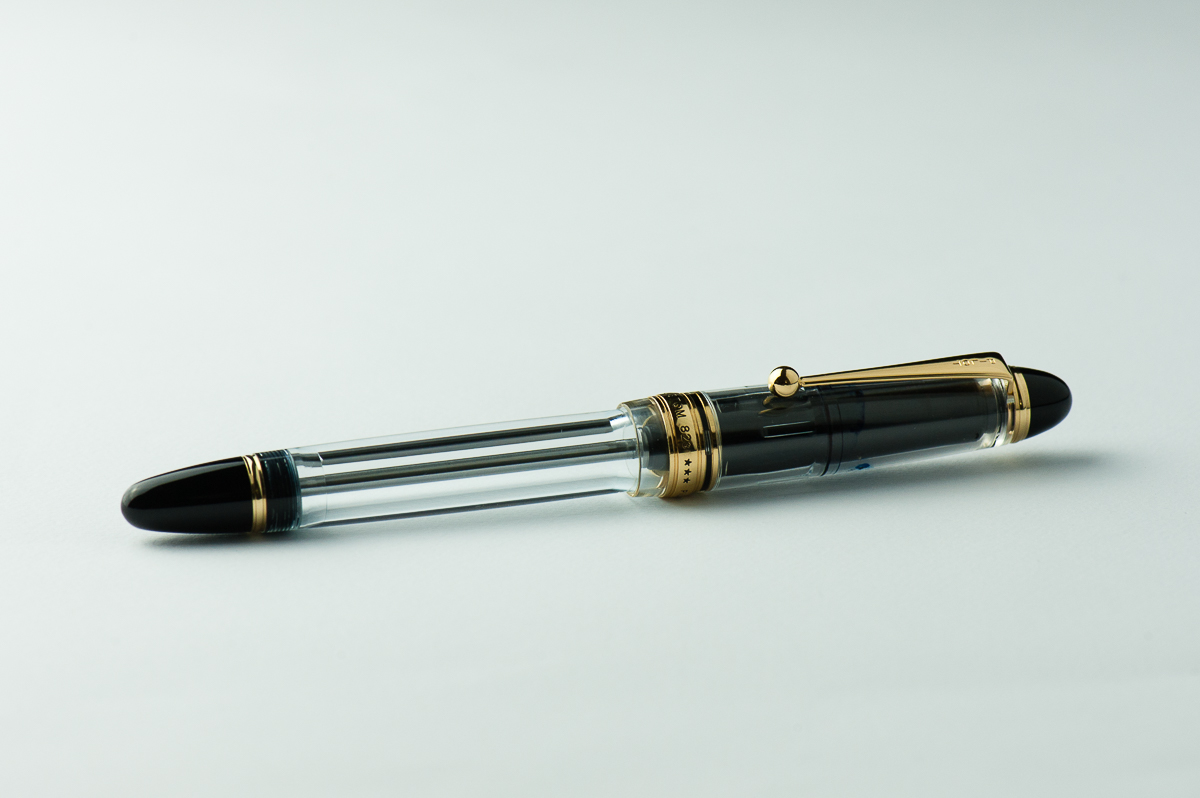
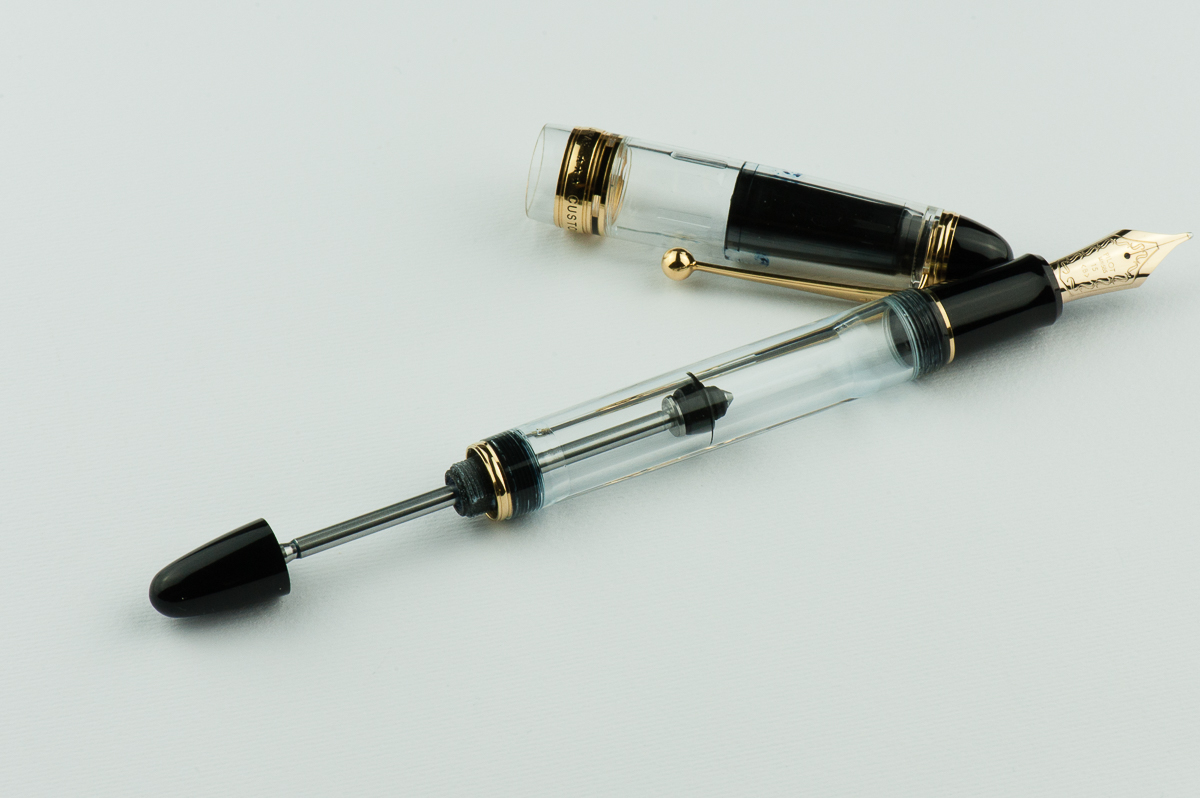
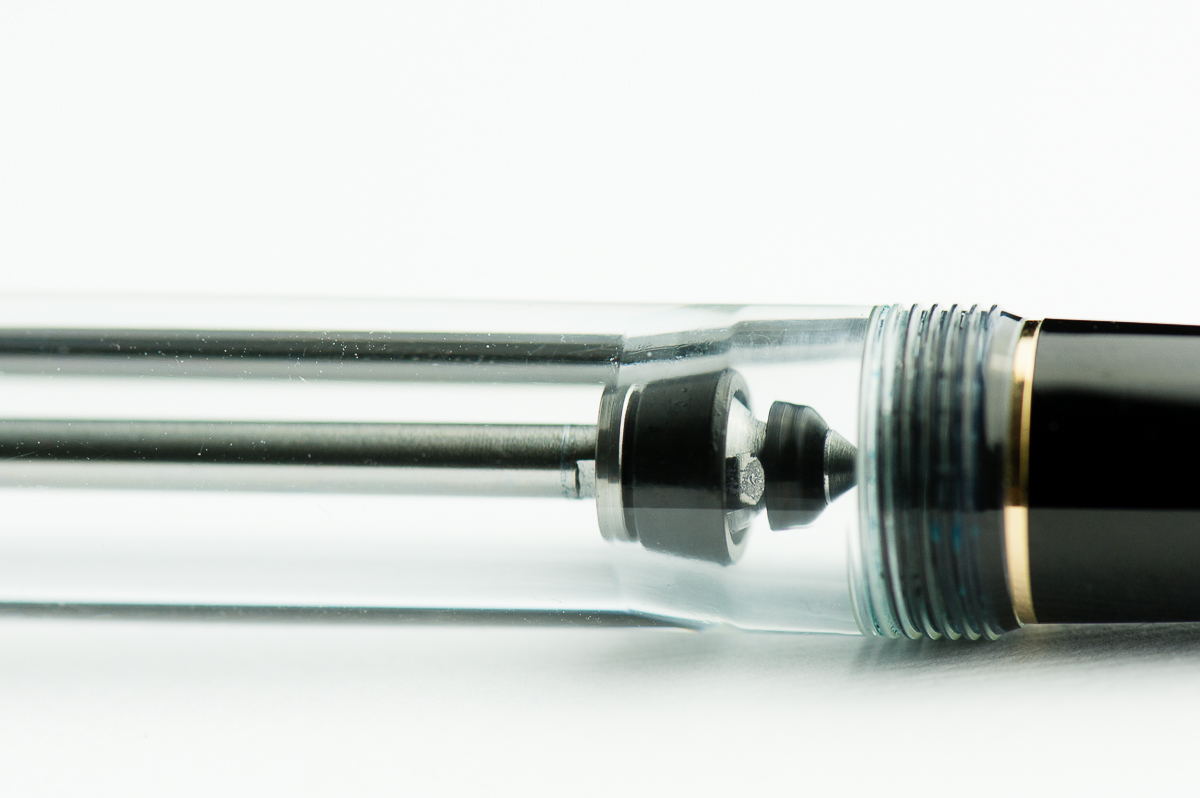
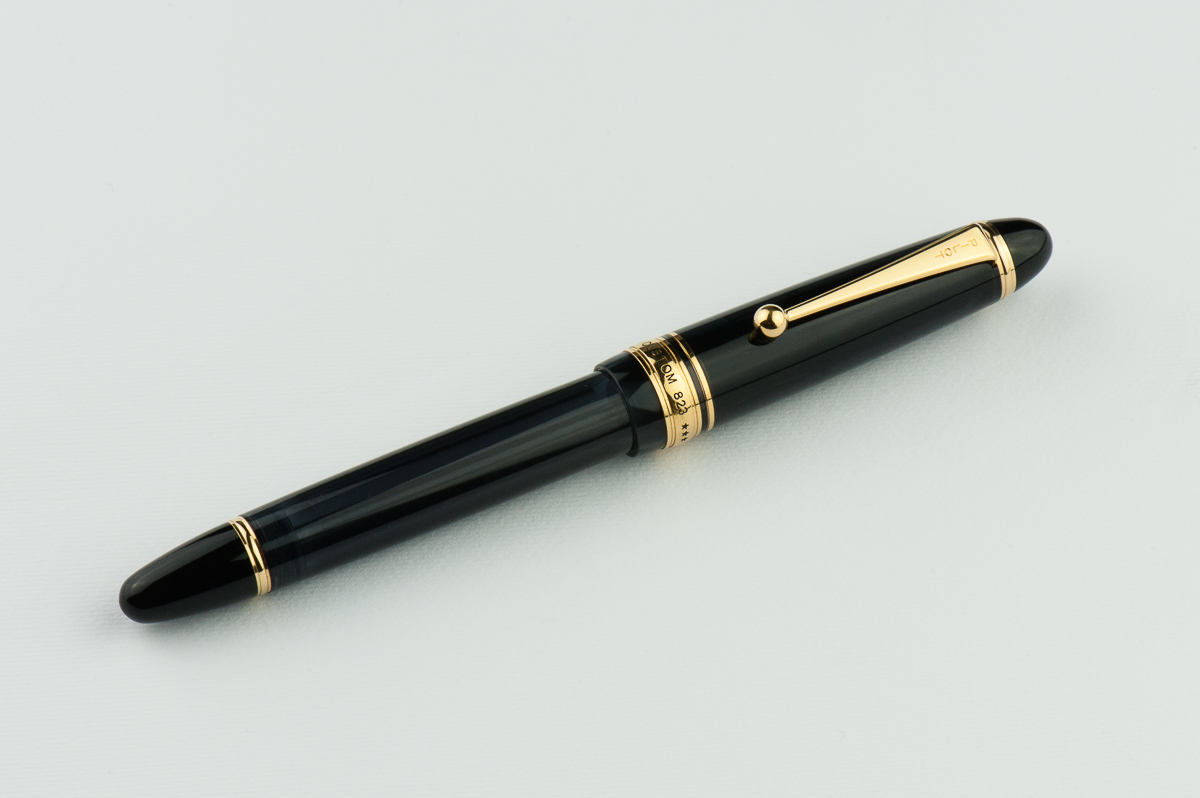
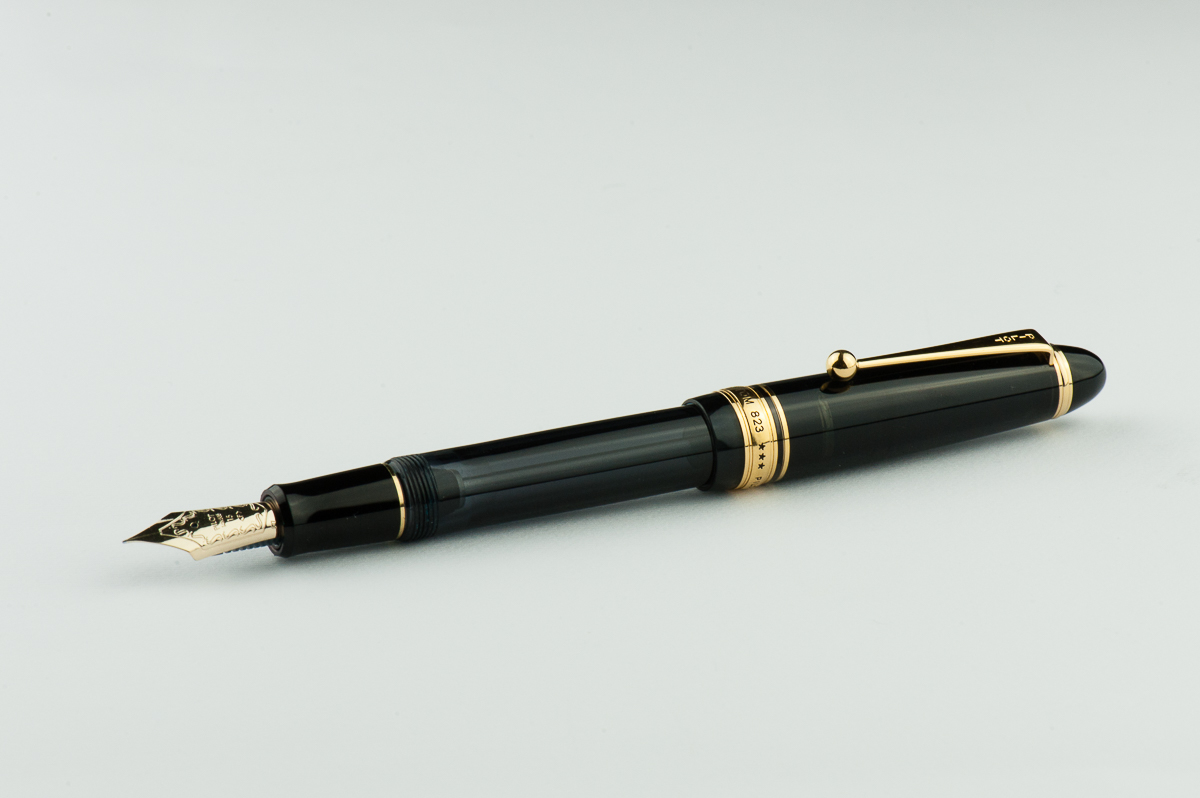
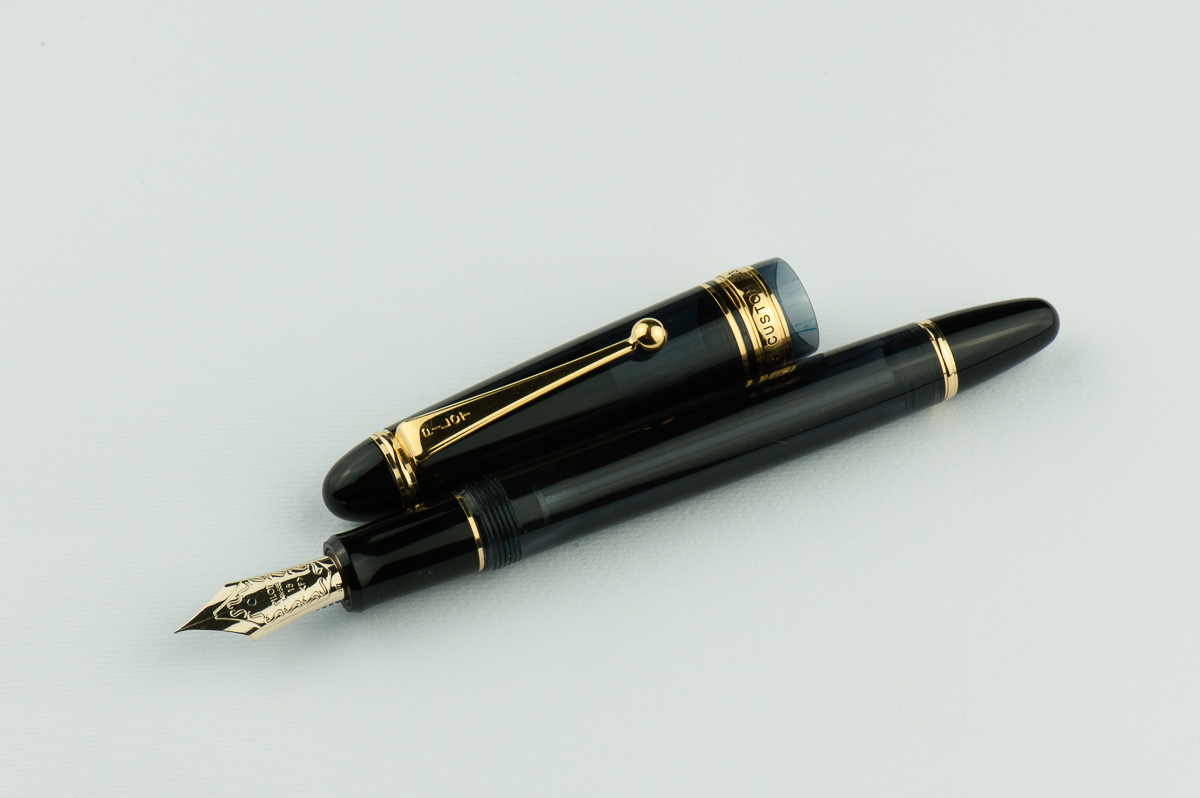
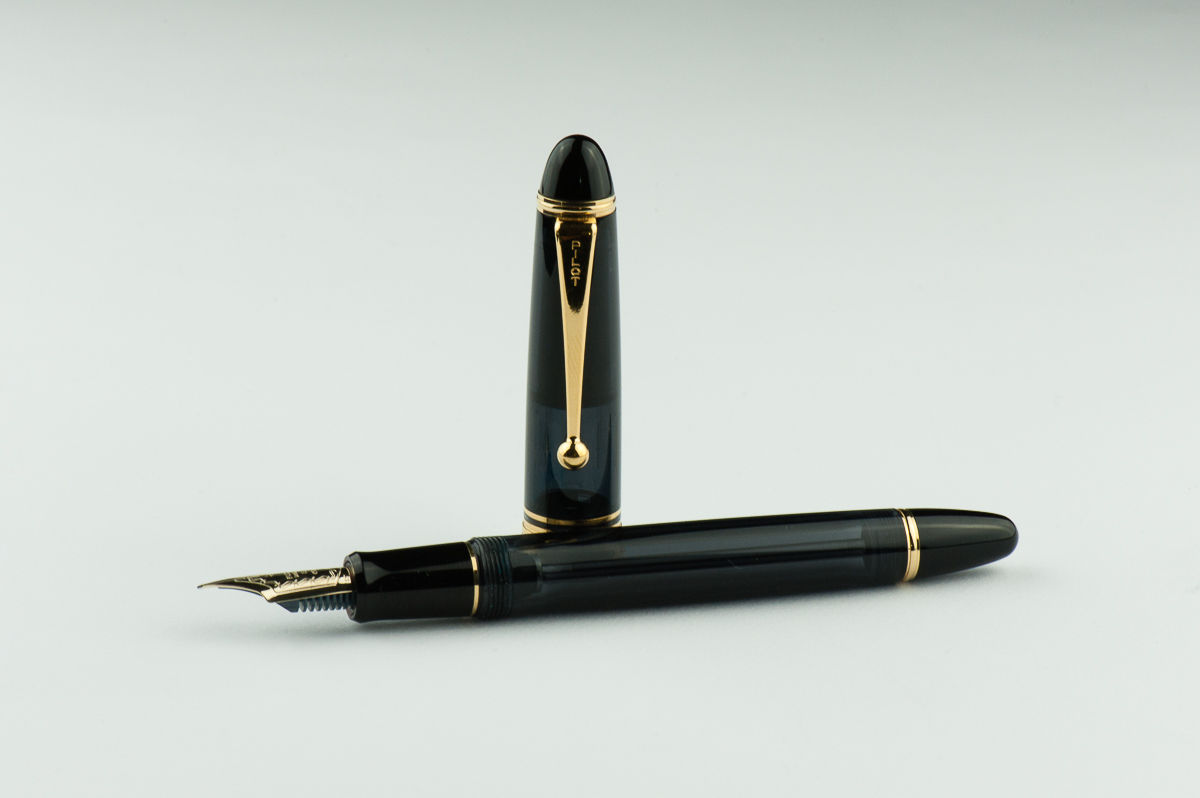
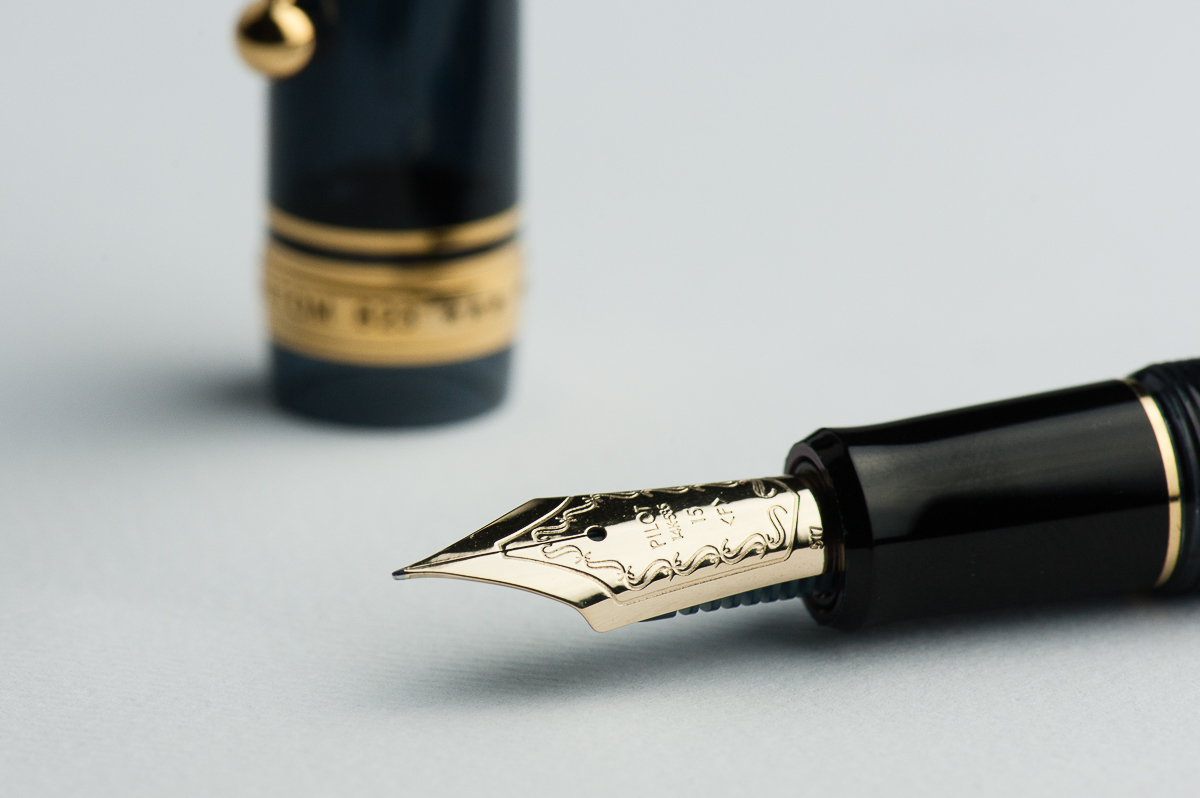
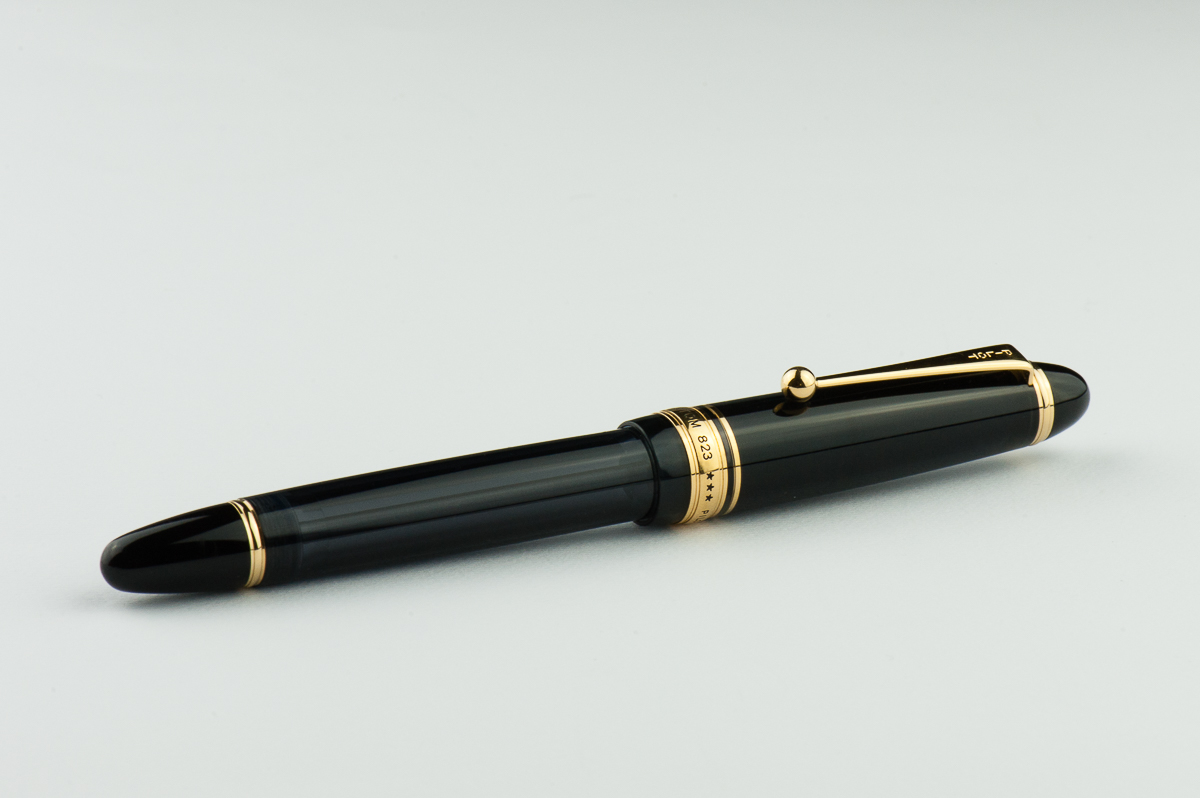
9 Comments
Thanks for the great post, and the wonderful photos. I badly want the clear demo version.
As an EDC pen, my only hesitation is the flow. I had Nibs.com tune my medium nib to write moderately wet. It’s now wet enough that if I have my pen in hand, and am talking — and I talk with many hand gestures — then my hand movement seems to splatter ink on me, my paper, anywhere. The pen is still new to me, and I’ve noticed this with Iroshizuku Yama-Guri. So maybe I should try an ink that’s a bit more dry.
Or maybe I’d prefer a fine nib for everyday workplace use.
I’ve seen so many people think, like Katherine, that this pen was over-hyped… until they got one. I think I could be happy with this pen and no other for the rest of my life if I were inclined to take it down to one pen.
I bought this pen with great expectations. When I got it, it wouldn’t write for me! It skipped every few letters. I sent it back to Indy Pen Dance to be “fixed.” After viewing photos of me writing with it, Linda at IPD informed me that I write holding my pen at a very high angle, about 65* off the paper instead of the average 45* that most people use. So, she tuned the nib for me with that in mind. Now it writes beautifully; smooth, a slight, “sweet” feedback, lays down plenty of ink but isn’t a gusher. The only problem? I have very small hands, and this pen is honestly too big for me to enjoy. If I write with it for more than a paragraph, my hand starts to get tired and the pen tries to run away. I don’t know how else to describe it; it tries to get out of my hand. I guess I just have trouble holding onto it! A shame. I may try to sell it. It’s a beautiful writer!
823—the ultimate, best pen that is not an over-priced & too precious art object….Never a skip, never dry, in over 2 yrs…Dependable in extremis….
I have a ‘F’, use Aubergine from D’atrementis—if first adjustment return to nibs.com. It’s free. Or go U Tube for instructions to reduce flow.
j-
Nice review guys. But how come that Sailor 1911L has no cap bands?
Thanks very much Adit! And yes. That Sailor 1911L is a European exclusive LE and I believe it’s called Blackout Ringless.
Yet another interesting Custom 823 review (or, as it seems here, multi-review). The 823 has been more-or-less my Main Axe writer for about a decade, even after inexplicably losing my first one (black/smoke, M nib), ultimately but not immediately replacing it with another (same color, F nib this time), at first thinking moving to an F was a mistake on account of all the extra nib feedback, but adjusting quickly (as opposed to all the truly scratchy FPs in my past, the F on this 823 was far more refined). Then, I went out and bought an Amber 823 with a M nib like my first one, and for a solid ten minutes thought THAT was a mistake, but realized I’d been writing with the F-nibbed version for a while; long story short, I’m loving both immensely now (with a Vanishing Point between them for good measure). Truly, this pen leaves me wanting for nothing. Who knew?
Thanks for a fine review with – bonus! – the clear one that not everyone can get their hands on, easily. (Good to know, for example, that it has a black-lined cap, which is a notch against it in my book.)
Anyway, I thought I’d weigh in on the Torpedo/Cigar debate (if “debate” isn’t too strong a word). I would have to side with Franz.
The nomenclature makes most sense if we start to ask ourselves this question: Should Torpedo- and Cigar-shaped mean the same thing or something different?
If it were to mean the same thing (in which case we’d limit our availability of easy similes), it could mean either an elongated elliptical design tapering to both ends… or parallel lines, flat top on one end and blunt tapering / rounded end on the other. That’s because you will get both cigars and torpedoes in both those shapes.
But if we are to distinguish, which way makes sense? There isn’t perhaps an immediate specific association of one of these shapes with the word “Torpedo” meaning the submarine weapons system. Most torpedoes people might think of, thanks to WWII films or Hunt for Red October, might be the parallel shape.
But that’s decidedly the standard cigar shape. And this is where we get somewhere. A cigar, when NOT in standard shape but tapered towards both ends, is then called a “torpedo”. From which it makes sense to conclude that if these were ever intended as distinct terms, it’s almost certainly to have hailed from the world of the cigars (in any case much closer to fountainpens in inside jacket-pockets of 1930s men in suits) than the world of naval warfare. Hence “cigar” ought to denote the classic cigar shape (parallel edges, generally flat-top at the front and tapered at the back) and “torpedo” denote the elliptical shape.
And now I think I’ve gone a bit overkill on this topic. Ooops. 😐
This is a Grail Pen that is actually affordable. Classic looks. Get the Smoke if you don’t like demonstrators. This outdoes any pen in my collection including my Mont Blancs. Perfect pen for everyday, for air travel or travel in different altitudes. The huge ink capacity means you don’t have to worry if you’re writing a lot during the day. This and the Vanishing Point are my favourite pens but the VP’s terrible capacity really does it in. This is the 1 pen I would have and recommend over any other (unless you’re note taking then the VP shines.)